


























A Blenheim-based winemaker who smuggled Australian vines into New Zealand and planted them has been placed on five months’ community detention and fined $15,000.
James Garry Millton (67) was sentenced on May 21st on two charges under the Biosecurity Act that he pleaded guilty to in the Blenheim District Court,
Circulating to 14,500 rural properties in Nelson, Tasman, Marlborough and the West Coast every month.
News
Eloise Martyn eloise@topsouthmedia.co.nz
Advertising Sales
Danielle Brown danielle@topsouthmedia.co.nz
Summa Donald summa@topsouthmedia.co.nz
Steve Page steve@nmf.co.nz
Accounts Queries accounts@topsouthmedia.co.nz
563 Main Road Stoke, Nelson 03 548 5900
52 Scott Street, Blenheim 03 928 4121
19 Wallace Street, Motueka 03 528 2088
100% locally owned and operated
following a successful prosecution by the Ministry for Primary Industry (MPI).
In June 2019, Mr Millton took two cuttings from a Savagnin grapevine at a vineyard he was visiting in the Adelaide Hills in South Australia. The variety was not present in New Zealand, and he wanted to cultivate it at his vineyard.
“Our biosecurity is multi-layered with checks and balances that stretch from the importing
country, through the border, and into the supply chain within New Zealand,” said MPI’s Director of Investigations, Gary Orr.
“The vines have since been destroyed and testing showed there was no exotic pathogens found, but Mr Milton was not to know that.
“By breaking the rules in place to protect New Zealand from new pests and diseases he took an unacceptable risk. If there
‘DeterminedlyTONY ORMAN
In times of awareness of environmental sustainability, products like wool should be flourishing and we need to showcase our unique kiwi product, Mark Patterson, Minister for Rural Communities and Associate Minister of Agriculture said recently.
The minister was addressing a “woolshed” meeting of farmers at Caythorpe farm near Blenheim and responding to a question from the audience of 25.
Mark Patterson said the problem was undeniable.
“Strong wool is in a dire state, with costs outstripping returns. Lifting returns from wool is a key component to getting profitability back into hill country sheep and beef farming which is doing it really tough,” he said.
Despite the situation, he declared himself ‘optimistic and determined’.
“I am optimistic. There is a global swing back towards natural fibres which provides op-

were pathogens present it could damage the industry and the opportunities and export dollars it brings into the country.”
Mr Milton submitted false information and failed to declare the grapevine cuttings when arriving at Auckland International Airport.
“He lied when filling out a Passenger Arrival Card during his flight home and a biosecurity declaration that that he was not bringing in any plant or plant
products. He knew this was false because he had the vines wrapped in plastic in his suitcase,” Gary Orr says.
Further investigation found that in 2020, Mr Millton had planted and grown the vines in a garden near his house in Gisborne. In 2021, he asked a nursery to graft him 134 cuttings, falsely telling the nursery that they were Chenin Blanc grapevine cuttings that he planted in the Millton Vineyard.

portunity. There is significant innovation into new products using wool which is encouraging,” Mark said.
“The only way to lift returns is by increasing demand in end uses that have the ability to

sustain a higher farm gate wool price. But he had advice.
“New Zealand farmers also need to consider whether the traditional pathways to market via the auction are serving us well and whether efforts to re-
structure the industry towards direct links with global brands and end users need further investigation,” he explained.
Mark Patterson said he and his fellow associate agriculture ministers, ACT’s Andrew Hoggard and National’s Nicola Grigg, represent “a pretty strong bench” reporting to Agriculture Minister Todd McClay who, as trade minister and associate foreign affairs minister as well, is likely to regularly travel internationally.
“Having three associate ministers “sends a strong signal of the weight we put on agriculture, how important it is to New Zealand, and how we are trying to utilise our skills there”, he said.
Kaikoura MP Stuart Smith, who chaired the meeting, said in response to a question about bank fees that the Finance and Expenditure Select Committee will undertake an inquiry into the banking sector when the Commerce Commission issues their final report in August.
This is the busiest time of the year for livestock movements so please remember your NAIT obligations this Moving Day.
When the county’s traceability system is threatened, we run the risk of having a system that won’t perform in the event of a disease outbreak.
The OSPRI/NAIT support centre increases their capacity during this busy month so if you need support call 0800 482 463
For non-urgent queries, consider sending an email info@ ospri.co.nz.
Be a mate — update NAIT
CEO of HortNZ resigns Chief executive of HortNZ, Nadine Tunley, has resigned with her last day at HortNZ being 30th August. The board said they are disappointed to see Nadine go, but she leaves HortNZ with a strong team, strong structure, and strong direction set out in the strategy and the Aotearoa Horticulture Action Plan and the board accepted Nadine’s decision that it is time for her to seek a better work-life balance. Nadine says leaving HortNZ was not an easy decision to make, because she loves working with dedicated and passionate growers. “You have continued to inspire me with your commitment and determination, even when the chips are down, and it has been a pleasure and a privilege to support you. I look forward to continuing to connect with as many of you as possible before I leave.”
OSPRI has been making a push in Tasman asking pig hunters to stop relocating wild pigs due to the huge risk of spreading TB. Tasman is on the fringe
of being TB-free. Many pig hunters who live residentially are not aware of the risks they are putting farming under by relocating wild pigs between forestry blocks around the top of the south.
A wetlands project led by the Tasman District Council, a collaboration between mātauranga Māori (described as ‘Māori knowledge’) and science is hoped to revive the land in the Black Valley near St Arnaud.
Seeking more productive land in the 1800s-1980’s eight kilometers of drains were dug into the earth to drain the wetlands of their water which had a devastating consequence on the land and the ecological system. The wetland is important for the future health of Lake Rotoiti because it is the only developed catchment of the lake.
On May 31st OSPRI’s Steve Stuart
stepped down as CEO an Acting Chief Executive was appointed to ensure a seamless transition through to August when Sam McIvor be stepping down from his role of the last eight years as CEO at Beef + Lamb New Zealand and New Zealand Meat Board and will take over as OSPRI new CEO.
Sam’s role at OSPRI continues a lifelong commitment to the agriculture sector. Originally from a hill country sheep and beef farm in the Manawatu, Sam’s career includes involvement with two livestock disease outbreaks and an acting role as General Manager of the National Animal Identification and Tracing (NAIT) scheme and Farm Operations at OSPRI.
Mars
Mars Incorporated (the food and chocolate company) is investing $47 million US over the next three years to reduce the carbon footprint of its dairy source – Fonterra. They aim to reduce the carbon footprint of dairy in line with its aims to reduce emissions by 50% before 2030.
ELOISE MARTYN
Rural Women New Zealand (RWNZ) and Premier Partner, NZI, have announced the launch of this year’s NZI Rural Women NZ Business Awards.
“This year’s Awards will reflect the increasing diversity in the enterprises that women own and operate in rural and regional Aotearoa New Zealand,” says National President Gill Naylor. “Following a review, we have revised some of our Award catego-

ries to embrace specific sectors that have seen phenomenal growth in recent years.”
“In particular, our judges have noted a significant increase in businesses which provide unique experiences, accommodation, and hospitality in amazing rural locations,” says Mrs Naylor.
“Another key trend is the growth of businesses producing and selling incredible products from rural locations. Our NZI Supreme Award winner in 2023, Sophie Hurley of Honest Wolf in Hunterville, is testament to the fact that living rural-
ly need no longer be an impediment to creating and building a hugely successful business.”
“These Awards provide a fantastic opportunity for women who own and operate rural enterprises to showcase their creativity and innovation. We are looking forward to recognising and celebrating this year’s entrants,” says Mrs. Naylor.
Tasman Rural Women member and advocate Emma Higgins says that entering the business awards is great nationwide exposure for your business and is well worth
the effort.
“Past winners have consistently mentioned the opportunities and confidence boost that has come from the Awards process, along with the community of women you meet on the journey,” Emma adds.
“Entering is easy, jump onto the Rural Women New Zealand website and fill out the form. Your future self and business will thank you,” Emma says.
Entries close on Friday, 26 July at 5 pm. For more information and details on how to enter visit: www.ruralwomennz.nz












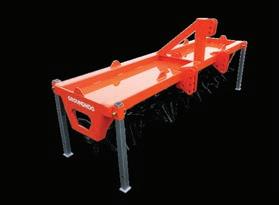



Civil Defence, and how it works in our community, may not be well known unless you have been personally helped during an adverse event, such as flooding, wildfire, or strong winds. There are a handful of organisations throughout Nelson and Tasman that meet regularly to prepare and plan in case disasters hit. When they do, these groups also kick into action and work together to respond.
The overarching organisation set up to manage our responses is Nelson Tasman Emergency Management (NTEM), which is based in the Group Emergency Operation Centre (GEOC) in Richmond. During an event, local emergency operation centres may also be activated in Golden Bay, Murchison, or St Arnaud if required to respond to local emergencies.
“One function of NTEM is looking after the welfare of people adversely affected by an emergency event,” says Ministry for Primary Industries (MPI)’s Jenny Ridgen, based out of the Nelson office, who is also one of the administrators for the local Rural Advisory Group (RAG).
The RAG provides information and advice to help prepare for, respond to and recover from, adverse events affecting the primary sector.
A key part of the group is identifying the welfare needs of people and animals in our rural communities and providing information and context to the Group Emergency Operation Centre (GEOC).
“The RAG can help most by providing information on the impacts of the event on farmers, growers, and others who live rurally so they can prepare,” Jenny explains,
“Depending on the time of year, a storm may have limited impact, or it may be quite devastating if it causes damage to crops before harvest or hits farms during lambing or calving,” she
adds. The local RAG has representatives from many of the rural communities in Nelson and Tasman, including farmers, growers, and foresters.
During an adverse event, the RAG network is able to provide a quick and reliable picture of the needs of our rural communities. This information then feeds into the Group Emergency Operation Centre (GEOC) to help prioritise response actions.
In addition to working closely with Nelson Tasman Emergency Management (NTEM), the RAG is supported by MPI and the Top of the South Rural Support Trust.
“This allows for a strong connection between recovery activities and access to support to help communities recover following significant events,”
Jenny says.
Richard Kempthorne is the Chair of the Rural Advisory Group (RAG) and the Chair of the Top of the South Rural Support Trust (TOSRST).
“We find that the RAG is a simple and very effective way of identifying where pressure spots exist. With our connections through the Top of the South Rural Support Trust, and the wider multi-agency presence at the Group Emergency Operation Centre, needs can usually be met in a timely manner,” Richard says.
If you have any enquiries don’t hesitate to contact Richard Kempthorne: 027 223 4000, email kempthorne. randj@outlook.com

and Richard
are some of the people who make the Nelson/ Tasman Rural Advisory Group (RAG). Photo: Supplied.

Sixteen more commercial beef farmers have been selected to take part in the ground-breaking Informing New Zealand Beef (INZB) programme to help drive the uptake of genetics in the industry.
The seven-year INZB partnership, supported by Beef + Lamb New Zealand, the New Zealand Meat Board and the Ministry for Primary Industries’ Sustainable Food and Fibre Futures fund, aims to boost the sector’s profits by $460m over the next 25 years. Focused on increasing the use of high-quality genetics in the beef industry, the four main components of the programme are developing New Zealand-specific breeding indexes, building an across breed genetic evaluation and data infrastructure, running a beef progeny test and linking in data from commercial herds.
“These 16 farmers from across the country, alongside
the 21 farmers already in the programme, are supporting our mission to give breeders and farmers genetic tools to help produce great tasting beef and drive production efficiency,” says Sonya Shaw, project lead, commercial herds, INZB programme.
“The INZB programme is helping commercial farmers understand the value of better genetics and offer them the opportunity to easily select the right genetics for their system to drive greater profitability on their farms.
We need commercial farmers involved in the programme because they contribute to the accuracy of breeding values of stud bulls available to commercial farmers,”
“Being part of the programme also allows for more accurate heifer selection in herds which will have a lasting impact on the commercial herds progress towards their own goals.”
The 16 new commercial farmers from Manawatu-Whanganui, Canterbury, Hawke’s
Bay, Southland, Otago, Waikato and Taranaki bring the total number of farmers involved in the programme to 37.
They are providing accurate pedigree recording, assessing bull teams’ performances, ensuring accurate information for heifer replacement selection and work with their bull breeders to make more rapid genetic progress. The farmers are also able to benchmark their herd against others involved in the programme.
The INZB programme aims to onboard at least 10 commercial farmers with a passion for genetics each year. Those selected adopt a recording schedule across the year and can also, if they wish, carry out genotyping of their cow herd and, on an annual basis, calves and sires.
“We had a great deal of interest in joining the programme this year and we look forward to inviting more farmers to take part next year,” says Sonya.


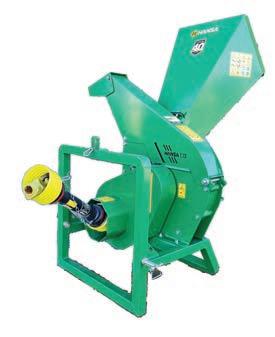


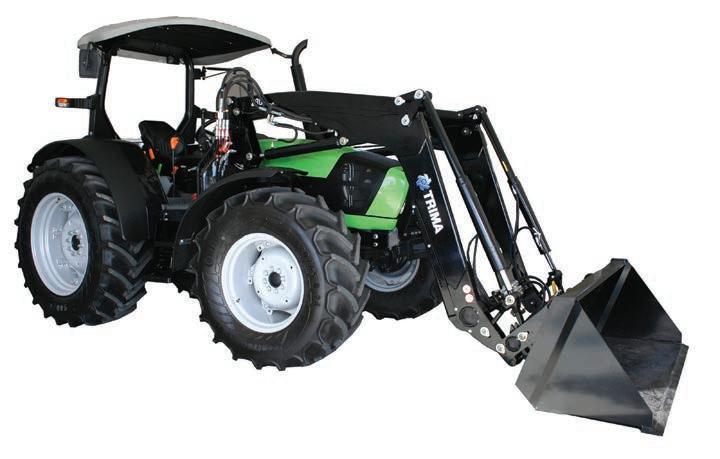

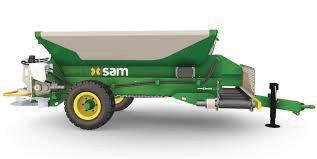

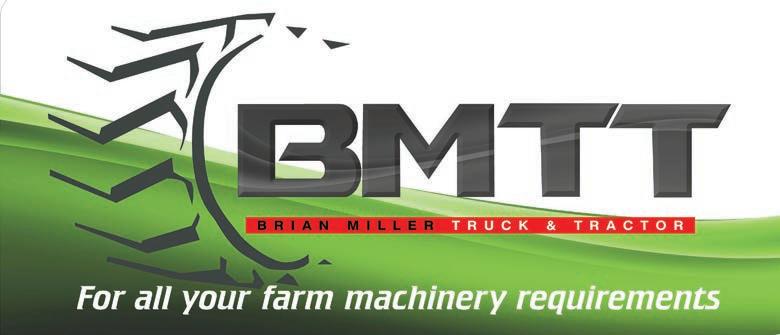


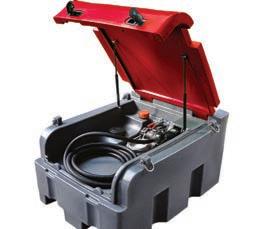

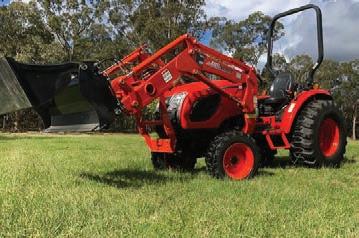

As days darken and the busiest times of the year lessen, farmers gather strength and incentives for spring challenges from annual conferences and field days. We are well into the field days season, culminating in frost and fog at Mystery Creek, and its conference season. Farmers have their industry organisation’s annual meetings padded with some other activity.
Dairy and horticulture sectors have specific conferences, and among others some livestock producers gather in regions. Not many attend the regionalised agri-professional annual gatherings like the Grasslands Association and Animal Production Society.
Recently, accounting, business, and less direct research entities are running high-profile conferences, presenting self-generated work and selected speakers for their own reasons. Costs, city venues and content quality can limit their audience and question their value. That suggests it is the industry innovators, movers, and shakers — the 15 to 20% of farmers who will attend. They can also access papers from MBIE, MoE, Motu, NZEIR, MPI, Royal Society and Landcare Research to burrow deeply into agricultural
aspects, even though research conclusions are light on profit and costs. Their leadership and example are important, but alone, they will not achieve government ambitions for urgently increased food and fibre exports. That comes from the next 70%, whose communication channels are rural media, podcasts, other internet

resources and direct and indirect sources readily available and cheaper on the farm. Were they motivated by the AgResearch Our Land and Water, twoday, $400, Wellington Symposium on how they could achieve a future for Aotearoa New Zealand where farming and our land and water thrive?
Accepting the claimed superpower wisdom of te ao principles involving food production when Maori leaders state the need to be better informed than their ancestors.
One interesting Symposium topic was tools to enable and encourage change. Landcare Research’s ‘Moving the Middle’ is leading this in a five-
year, multi-person project now halfway through. An example of potential risks from increasing research flowing from computer analysis of selected or incomplete information.
A key input in that project to move the target 70% of farmers is a repeated Survey of Rural Decision Making also used in some other conference papers to represent all farmers. The 2023 survey focused on environmental outcomes of GHGe, biodiversity, soil health and erosion and waterways, inferring that will also improve farm profitability. It had 5243 respondents, with only two-thirds commercial producers. Compare that survey, widely used by various policy people, with data from B&LNZ economic survey data. While the voluntary Landcare survey had sheep and beef farmer equity at 83%, the industry survey had most farmers in this region around 70%, with a return on that equity around 3% and a projected negative return this year.
A fundamental and common research flaw is assuming each farm and farmer are the same to fit a model. Farmers need to change or want to change before knowing the what, how, when, and where. Then they need the right messages for them delivered in the right way.
The Ministry for the Environment has recently released the NZ Greenhouse Gas Inventory report that covers data from 1990 to 2022. It is a reporting requirement under the United Nations Framework Convention on Climate Change (UNFCCC) and the Paris Agreement. Overall, NZ’s emissions have increased 14% from 1990, but have been decreasing
over the last several years. Between 1990 and 2022, net removals from the Land Use, Land-Use Change, and Forestry sector (LULUCF) decreased by 21%. This decrease is largely due to a reduction in removals from forest growth, driven by the comparatively high forest-harvest rates currently occurring in Aotearoa New Zealand’s planted forests. In 2021, forests reduced gross national emissions by 27.5%.

good environmental practice that can be shared.”
“The public loves farming but unfortunately farmers perform very poorly when it comes to promoting farming,” according to Waihopai Valley farmer Chris Dawkins.
Mr Dawkins made the comment in a report to Marlborough Federated Farmers annual general meeting while noting that entries for the two-yearly Cawthron Marlborough Environment Awards will be called for in August.
“Although Federated Farmers have been the continuous category sponsor of the farming award since 1998, we struggle to attract farming entries, which is disappointing given the significance of the agricultural industry in Marlborough,”
Chris said.
“The aim is to find real-life examples of
Chris said the awards represented a great chance to showcase farmers’ cause and role in environmental welfare and stewardship.
Past farming entrants spoke glowingly of the benefits that came from entering, such as getting constructive critiques and the sharp upward learning curve gained. The eight regular categories are wine industry, business innovation, community innovation, forestry, landscape and habitat enhancement, marine and farming, with a new category this year of electrification and energy efficiency. There is an overall supreme winner. The Awards began in 1998 and are supported by the Cawthron Institute, Marlborough District Council, Department of Conservation and local sponsors.

National MP for West Coast - Tasman
There are very few problems in New Zealand that cannot be solved by a fast-growing and healthy economy.
Agriculture is key to New Zealand’s economic success so having a thriving industry in the region is a crucial part of achieving this.
It’s very satisfying to see the focus going back on supporting farmers and growers rather than over-burdening them with unnecessary regulations. These extra costs are a big barrier to development in the sector so removing them will create positive effects for this region. There is an important social fibre that is preserved in rural communities by the economic stimulus provided by a strong primary industry. It’s those extra few families at the local schools, more fire and ambulance volunteers and more families coaching and playing sport, and of course spending locally.
Our broken Resource Management Act (RMA) is a big contributor to the red tape holding our rural communities back. Fixing this issue will play an im-
portant part in boosting our primary sector to help rebuild our economy. That is why the coalition Government is carrying out an RMA reform programme that will make it easier to do things and build things across New Zealand.
The reforms the country settle on must improve the status quo with smart regulation that focuses on outcomes, rather than telling farmers how to run their businesses. We believe that getting this legislation right is critically important. New legislation will be introduced by the end of our current term, which will be practical, transparent, and support economic growth.
However, replacing the Resource Management Act (RMA) will take time and this Government wants to deliver results for New Zealanders as soon as we can.
The next step in our reform programme, RM Bill 1, is expected to be introduced to Parliament this month. It will make targeted changes that give certainty to councils and consent applicants while new legislation to replace the RMA is developed. Crucially for our rural communities it will support development of our primary sector to help rebuild an economy in recession that is
crying out for growth.
The five changes included in the Bill will clarify that consent applicants no longer need to follow the hierarchy of obligations in the National Policy Statement (NPS) for Freshwater Management, amend stock exclusion regulations for sloped land, repeal intensive winter grazing regulations, align the consenting pathway for coal mining with other mining pathways, and suspend the requirement for councils to identify new Significant Natural Areas (SNAs) for three years.
These changes will help unlock development and investment in infrastructure, housing and primary industries, while ensuring the environment is protected. In the short term this will be more workable for farmers while larger reform to create fit-for-purpose regulation is underway. It is possible to grow our economy and protect our environment at the same time. The RMA reform programme will help rural businesses thrive and make it easier for the economic growth this country needs.
The rural areas of the ‘top of the south’ region will play a significant role in driving that economic growth.


It is possible to grow our economy and protect our environment at the same time who says that ‘It is possible to grow our economy and protect our environment at the same time’ and that ‘The rural areas of the ‘top of the south’ region will play a significant role in driving that economic growth.’ Photo: Supplied.
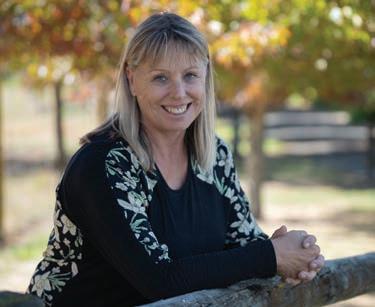


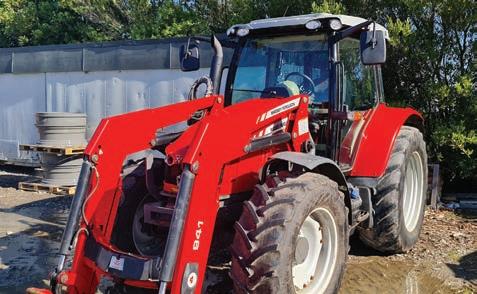







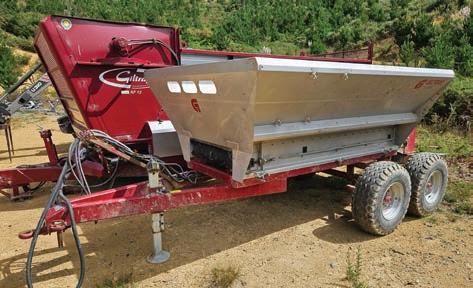
• Iseki 6500 and loader - $12,500
• MF135 Diesel very tidy, great order - $5,250
• John Deere 1640 Cab, great order - $10,750
• Giltrap RF13 Side delivery feed out wagon, near new condition, under half new price - $32,500
• Massey Ferguson 245 power steering good rubber. Tidy order. New seat and serviced - $10,500
• Daedong DK80 cab and loader low hours and tidy tractor great buy$19,500
• Welger B435 Master Baler, farmer owned - $22,000
• Bucktown 1.8m h d mulcher hy side shift like new good hammer flails - $6,750
• Vicon PZ 360 haybob late model in very good order - $4,750
• Small 1.5 slasher - $1,600
• Giltrap 3pl log splitter - $2,250
• Heavy duty 7ft back blade hy rams to angle and tilt - $6,500
• Austin 3m HD cambridge roller
• Excellent condition - $4,950
• Vineyard Sweepers - 3 available
• Hustler front fork lift suit 135 MF$2,000
• Trimax 1.8 Vineyard Mower, tidy order - $3,000
• Dual wheels Snap/locks 38” 36” 34” 30” from - $2,200
• Fieldmaster 275 topping mower, all serviced, good condition$4,950
• Silvan 600l herbicide sprayer electric controls - $5,000
• Celli Tiger 190 Rotary hoe new blade 3m wide cage roller - $9,500
• Kvernland TLA 6 metre cultivator crumbler - $8,500
• Mole plough good order - $1,850
• Rata pallet fork euro hitch - $1,250
• 9ft cambridge roller, very good order - $2,800
• Yeoman chisle plough 9 tyne$2,200
• 2m cultivator - 2 to choose from
• Used cambridge roller rings
• Berti 1.6 mulcher very good order - $6,750
• Berti 1.6 picker mulcher - $5,500
• Howard AR 80” rotary hoecoming in
• Duncan 633 Culivator Crumbler$5,000
• 2000l trailing overow herbicde sprayer hy fold, fully serviced complete with autorate controller - $6,500
• 3 metre leveling bar 3pl - $2,200
• Vicon 302 spreader like new$2,400
• Brevigleri 1 8 mulcher runs up well - $3,500
• 2m Rapier gear drive mower all serviced and ready to go - $6,500
• Fieldmaster gear mower, 1.8 mtrs wide - $6,750
• Ero Roller plucker on power pack all serviced good order - $12,000
Jonathon Hoets has been selected to join the DairyNZ Board as an associate director for the next year, while current independent director, Margaret Devlin, is stepping down from her role.
DairyNZ chairman Jim van der Poel says that he is excited to
have Jonathon join the Board, in the associate director role, as he has shown a commitment to governance, and significant involvement in industry good already.
“The Board was heartened by the standard of applicants, and the talent coming through of people wanting to commit to the future governance and leadership of our
dairy sector,” says Mr van der Poel.
“This role provides the opportunity for people coming through to be more exposed to governance, and supports the next generation of farmer leadership, while the Board gains insights from clever young people coming in and contributing to our discussions.”
Jonathon Hoets, and his wife Stacey, are equity partners in a 790cow farm in mid-Canterbury for the Rylib Group. He is involved with the SIDE Governance Group and organising committee, alongside NZDIA, while actively contributing to his community through volunteering with his local rural fire brigade.
Is the Brown Marmorated Stink Bug (BMSB) trying to sneak into your house to shelter from the cooler weather?
Growers and farmers are calling for your help to be on the lookout for this sneaky pest, which has had an increase in its detection, loves to infest homes, and attacks a wide range of crops.
This sneaky hitchhiker agricultural, horticultural, and social pest attacks a wide range of crops and if established in New Zealand it could decimate our fruit and vegetable industries.
BMSB isn’t established in
New Zealand but detection of its presence at our borders has significantly increased over the last few months.
According to Kiwifruit Vine Health since the start of the high-risk period (1 September 2023) there have been 100 live BMSBs detected.
Most detections are associated with personal effects, sea cargo, and vehicle transport ships. In the latest reporting period (16 February to 15 March) there were 14 live confirmed BMSB detected, compared to four in the same period the previous season.
Evan Heywood, from Heywood Orchards (a family that grows around 80 hectares of apples and 20 hectares of Ki-
wifruit in Riwaka, Motueka, and the Moutere), says: “It would be a massive risk and threat to our crops if it were to become established here.
“Our winters are not cold enough to eliminate it, so it would be very hard to get rid of it.”
Adult BMSBs feed on mature and immature fruit, while nymphs feed on leaves and stems. They severely disfigure fruit which renders it unmarketable resulting in control costs and production losses.
“It’s well established overseas with our trading partnersa real pest to growers. They congregate in big numbers in people’s houses and cause
damage, it would be very unwelcome if it were here,” Evan adds.
There are many other similar-looking Stink Bug species in our country. The easiest way to identify the BMSB is from the white bands on their antennae and alternating black and white markings on the abdomen. Its underside is a white/tan colour. If you buy anything online or receive mail or parcels from, overseas check them for BMSB hitchhikers.
If you think you’ve found a Brown Marmorated Stink Bug – don’t kill it; catch it, take a photo, and call Biosecurity NZ immediately on 0800 80 99 66.
“Jonathon will bring his unique set of individual skills, experience, outlook, and opinions which will help shape discussions and decision-making. This continues to be crucial as the sector navigates various challenges, and the Board look to deliver on the new DairyNZ strategy,” says van der Poel.
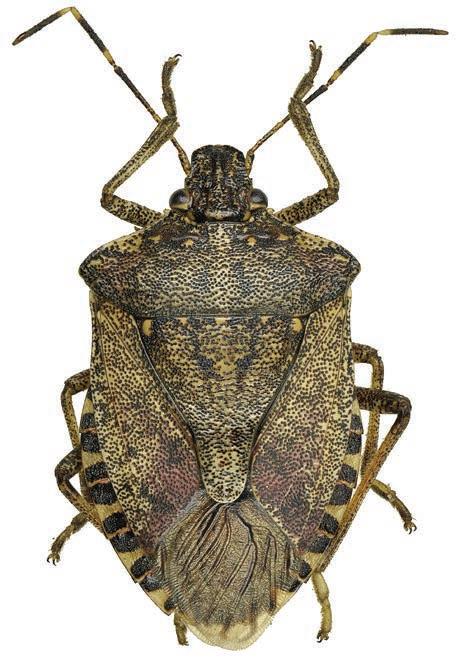
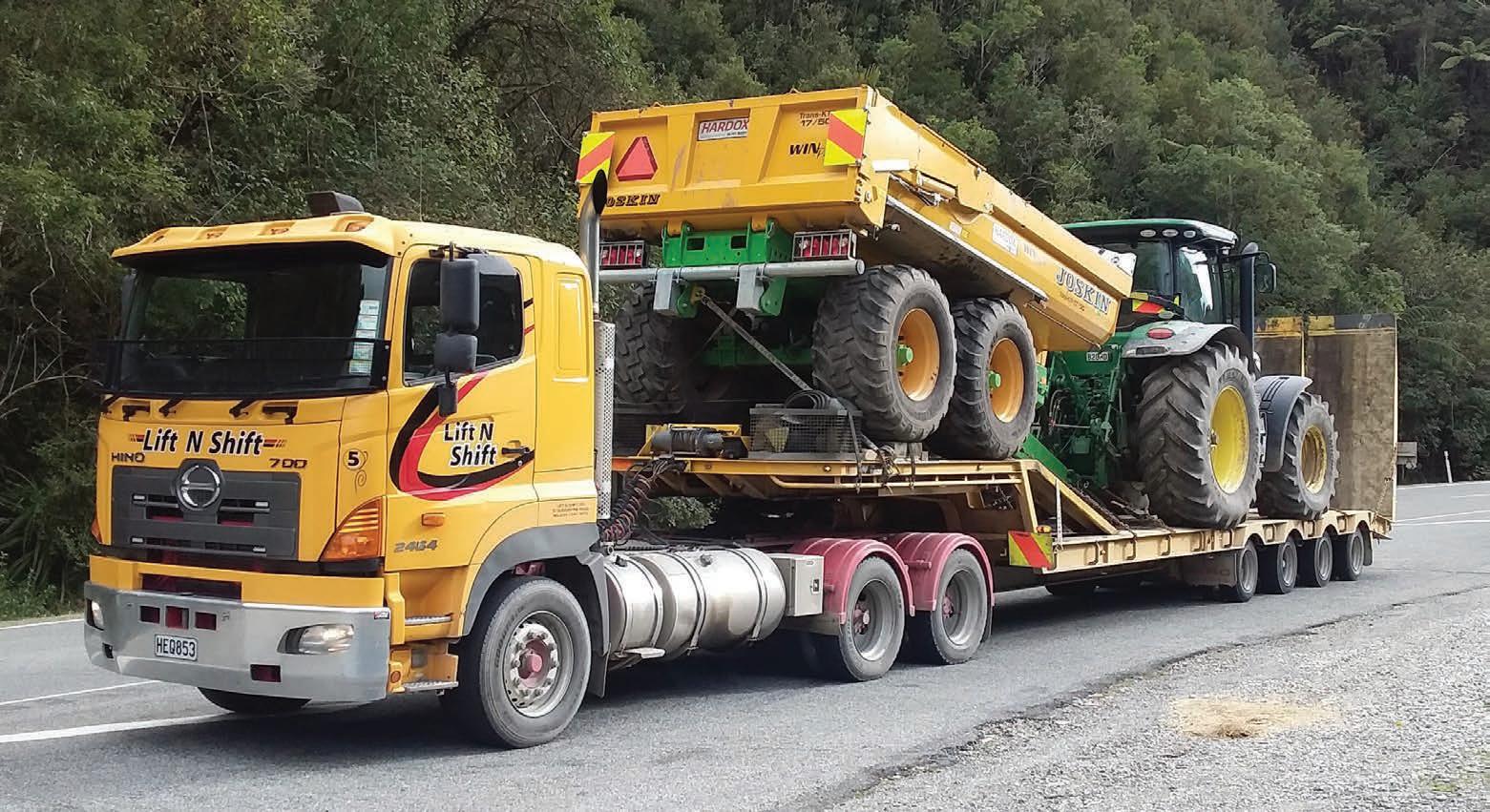
It’s hard to believe the month of May has been and gone with the continuation of the Indian summer we have experienced over the autumn. Despite a timely fall in April, we are looking at a green drought at present, and needless to say, we are all searching for rain. That means that cooler weather will soon follow so I trust all our region’s farmers are prepared for a good old fashioned Tasman winter.
It has been a difficult year and across most rural real estate categories we have seen plenty of listings but a general level of caution mainly being led by the spectre of sustained higher interest rates and lower farming confidence. Generally, we have a reasonable number of smaller block sales across forestry and bare land to keep things ticking over in late autumn however, with forestry in the doldrums and buyers for bare land blocks sitting on their hands we are seeing plenty of property on offer with little positive sale evidence.
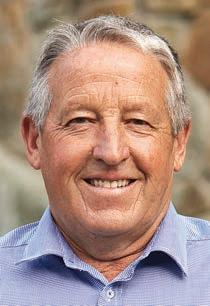
so if you are contemplating a sale in the coming year now is the time to start taking the advice of your advisors and real estate experts to start the process. We have seen a softening of prices across the board and with an increase in listings giving plenty of choice it is imperative that the real estate agent you choose has a deep understanding of rural markets and has access to a nationwide team of rural experts. With PGG Wrightson real estate, you also have the benefit of our wider company for advice on livestock, rural supplies, and horticulture (Fruitfed) so we can honestly assist in all farming facets. The most essential advice you can get is an accurate appraisal of your property value and we have seen time and time again some agents over-appraising property value to gain a listing and then leave a disappointed vendor picking up the pieces. Our policy is honest appraisals and honest conversations with our clients so please give us a call.
There is a lot in rural news lately about the challenges facing our two largest cooperatives. Alliance is seeking $150 million to bolster its balance sheet to continue to operate as a cooperative for its farmer suppliers and members. Fonterra also has recently announced a sell down of its consumer businesses to make better utilisation of its capital and increase returns for existing shareholders.
are privately owned, or publicly listed companies designed to maximise the returns to shareholders and building value of the entity through dividends and share value.
Across New Zealand, PGG Wrightson agents report a reasonable number of listings already being prepared to come on the market in the spring. These range from dairy properties to pastoral and arable farms. As we all know people’s lives move on and timely decisions need to be made
When you look at all the horrible news coming through from across the world it makes you appreciate how lucky we are in New Zealand. I hope that luck rubs off on our various sporting codes as we enjoy the coming months with the Olympics, World Cup Cricket, and All Black games to enjoy. And maybe an ounce of luck will see the Crusaders make the playoffs!

Both of these companies were set up as cooperatives to serve the interests of suppliers who lack leverage in a normal open market situation. The coops were also set up to provide intergenerational security for those same farming families whose ancestors had learned from lessons of the past. That was all too often the limited leverage suppliers had to extract fair value from their hard work and production.
While I am not in a position to know all the financial details facing the directors of both companies, I have been involved in many processes critical to the operation of cooperatives. Changes to legislation in the 90s, the setup of Fonterra in the early 2000s, adjustment to commerce law and Fonterra structure have all been designed to give fair returns to suppliers and shareholders of Cooperative Companies. The alternative structures
While cooperatives have similar objectives their set up allows preferential taxation treatment because they are designed to also offer better protection for supplying shareholders. In the case of dairy, milk produced for supply is an asset for 48 hours but beyond that a liability should the company fail to pick up and process that milk.
The major investment by both dairy farmers and meat farmers is in their land and animals, and securing the value from those assets is dependent upon the current performance and future strategic direction of their cooperative company.
While there is little value to point to the mistakes of the past or cry over spilt milk, it is critical that these and future decisions serve the interest of not only existing shareholders holders but also those into the future, particularly for cooperatives.
The proposals from Fonterra require the disposal of the higher value components of its production system and return that capital to the company and its existing farmer shareholder base.
Many farmers will rightfully question directors on where that leaves the company and its strategy for future generations of dairy farmer suppliers.
This is also likely to play into the hands of foreign investors who understand the opportunity to maximise the value of New Zealand’s high-quality raw milk. The unsold components of Fonterra will focus on the collection and processing of raw milk into base products for ingredients and food service. That could expose us to the risk of direct competition from products produced in Ireland, South America, the US or any of our other Ingredient competitors without consumers knowing where components of their food are sourced.
The temptation for existing farmer supplying shareholders to capitalise on the sell down of those assets could come at the cost of the long-term objectives of the cooperative to protect opportunities for future generations. The same challenge faces the shareholding suppliers of Alliance who have to decide whether to maximise their return on livestock sold now or make a small investment per animal into the future of their cooperative. Without the cooperative influence on livestock value farmers will face the reality of limited leverage in the market.
It is time for thousands of farmer cooperative shareholders to decide if they want to capitalise on current returns or cooperate for a better future. It is a subtle distinction but a significant decision for New Zealand’s economy.






It’s experiences like these that create lasting memories and teach important lessons about self-sufficiency, respect for nature. Photo: Supplied.
Each year, Fish & Game works with landowners and forestry companies to provide hunting opportunities for game bird hunters. Extensive production forestry areas in Tasman and Marlborough provide an ideal habitat in which California quail flourish, and Fish & Game has solid working relationships with forest management companies such as PF Olsen, OneFortyOne, and Tasman Pine Forests to facilitate hunting opportunities here. These opportunities are well received by local hunters who have limited private land hunting options which is common in the Tasman Region where small farms and lifestyle blocks abound. Some of our facilitated hunts

are tailored to address high bird numbers that may be impacting on farming operations, as well as providing recreational opportunities. Many West Coast hunters will be familiar with some great organised shoots run by Fish & Game West Coast staff, successful and social events which are also a popular way to introduce new hunters to the pursuit.
Another example is the annual Pukeko hunt near Nelson which has gone on to become one of the seasons highlights for the 60 hunters who participate and has been effective in reducing the very high bird population here. This hunt provides multiple ‘wins’ in that it controls bird numbers, and provides recreational opportunity, with the meat used to cook tasty
casseroles which are provided to people in need, and the carcasses become food for native Karearea (NZ falcons) at the Marlborough Falcon Trust.
If you have land with abundant bird numbers you would like addressed, call the local Fish & Game office and we may be able to work with you to facilitate a successful hunt here.




‘Thriving together’, a recent strategy released for the under-financed and struggling honey sector, has some beekeepers concerned about the proposed export levy and the lack of details on how they will command premium prices for all honey products. However, the strategy does have some benefits for progressing the industry from its current distressed state. The strategy, initiated by Apiculture NZ, proposes a new compulsory export levy, and new export quality standards. It recommends creating a new industry body with significant authority to deliver the strategy and communicate with stakeholders to double New Zealand’s honey export value by 2030.
Wakefield-based beekeeper, Nick
Milne, says that while the strategy looks and sounds positive, it’s very short on details as to how beekeepers will command premium prices for all honey products’ and importantly how this will flow back to the beekeepers running the bee hives.
“There’s an underlying concern from beekeepers that this is part of a push to make compulsory levies, paid to Apiculture NZ, at a time when industry costs are at an all-time high and bulk honey prices are weak albeit showing signs of small growth.”
“Focusing on Manuka honey, larger producers, and packers/ exporters has meant that many grassroots beekeepers feel that they are not being advocated for effectively by their industry body,”
Nick says.

Long-time beekeeper and Apicul-


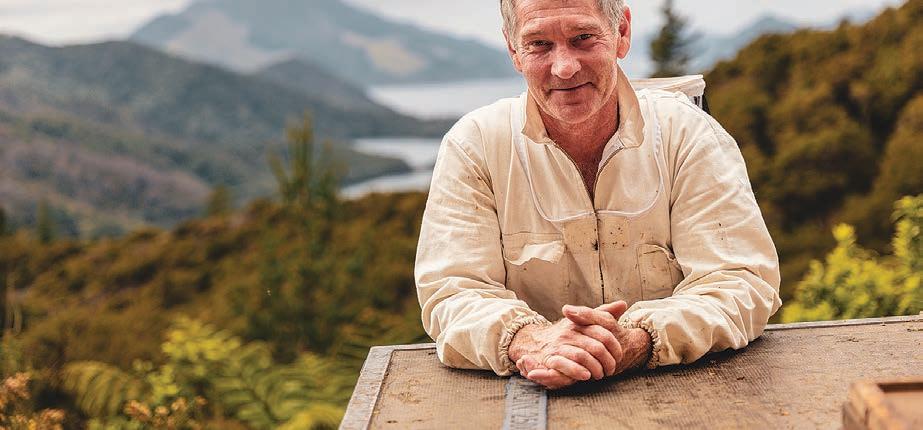

ture NZ board member Murray Elwood says that introducing levies would have a beneficial effect on all beekeepers and the industry as a whole.
“The strategy is sensible and beneficial,” he says. “Our money maker is Manuka, so it makes sense to try and get the right pillars, quality customers, and focused sustainability. We need to work on customer focus and marketing.”
Murray says: “If we can get exporters on board and stop un-
Beekeepers, or apiarists for those who like to be fancy or proper, are reporting that their recent season was an improvement on the last. However, don’t don your beekeeping suit just yet local bee expert Nick Milne suggests it may take several more years before the industry reaches a stable equilibrium.
“Varroa seems to be better this season just gone, which is down to people continuing to put extra treatments in their hives to keep levels manageable. Our hives look as good as they have ever looked at this time of year” third-generation beekeeper and owner of Blue Sky Queen Bees and Backyard Bees, Nick Milne says.
While decreased Varroa mites is something to buzz about, the recent drought certainly isn’t. The drought led to a sharp decrease in nectar sources as the lack of water affected the development of many plants and flowers from which the bees feed.
“The dry season created some hungry bees who were
dercutting each other we can get prices up and create some equilibrium which will be good for all beekeepers.”
Murray says that part of the strategy involves investigating and adjusting to what our overseas customers want and highlighting that our New Zealand honeys are a premium product.
Regarding the ambitious goal of doubling honey exports by 2030, Murray says it’s a high target to attain, but having a goal gives di-

chewing through their food which saw us increase their available feed,” Nick explains. “It also impacted our queen bee’s breeding percentages, which were slightly lower than normal at some points in the season.”
According to Apiculture NZ, the number of registered beekeepers nationally has reduced from 9,585 to 9,131 with an estimated 586,076 hives.
that they know of local beekeepers sitting on honey that there is a market for and that those keepers need to consider being realistic and get things moving even if at a lower price.

However, after speaking with several local beekeepers they believe hive figures have not been updated and the figure is realistically more around 500,000 hives give or take. Other local keepers explained to Top of the South Farming paper
Nick said for his operation it was a combination of a range of honey types with varying timings and prices was how he worked on ensuring that his return per hive gets to where it needs to be to support his business.
“The price of bulk high-end Manuka has largely collapsed, however there has been an increase in demand for lower-end Manuka and prices for other varieties such as Honeydew and Bush honey which are produced in the

rection, confidence and purpose.
“If you don’t have a goal, you have nothing to work towards; even if we could increase exports by 30 per cent wouldn’t that be wonderful,” he adds.
“There are many people who have put in countless unpaid hours for the good of the industry over the years, I think it’s time all of the stakeholders got behind our industry professional representation and the strategy can encourage this,” he says.

top of the south have improved also.
If you can combine multiple nectar sources, focus on volume, and controlling costs things start looking a lot better,” he says.
Overall, the premiums and highs of the ‘Manuka boom’ are unlikely to ever return. However, Nick says there are some glimmers of hope that a sustainable industry may be just over the horizon.
“It’s still challenging but green shoots are showing. However, realistically we are a few seasons away from where we really need to be,” Nick says.
“With a better number of hives, demand and supply is starting to get closer to balancing out, and prices have moved. Export-wise things are moving, but at a slow pace - but at least they are moving.”

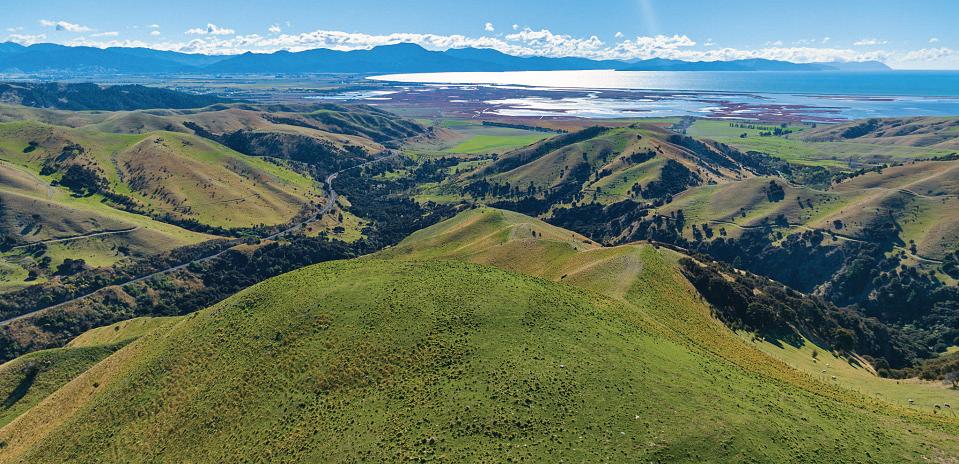




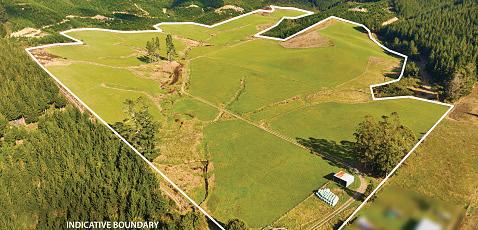
REDWOOD PASS 494 Redwood Pass Road
RIVERLANDS State Highway 1
Bare Land Hill Block
Hill Block with Consented Quarry
Not to be missed is this 80ha (197 acres) bare land block with a State Highway 1 frontage just South of Blenheim. Stunning views of Cloudy Bay can be accessed via the well-formed tracks that lead to the back of the property while close to the highway is a hidden but huge levelled building pad where you could build the shed of your dreams. Approximately 8ha has been levelled along the State Highway 1 frontage that could one day be planted in grapes. To add to the opportunity on this block, a large quarry exists on the southern boundary with a new resource consent to extract gravel until 2038. An additional benefit to an already attractive property.
Joe Blakiston
M 027 434 4069
E jblakiston@pggwrightson.co.nz
Greg Lyons
Joe Blakiston
Where else could you find a 153ha (378 acres) hill country grazing block within 10 km of downtown Blenheim yet in a world of its own. Accessed by a sealed road almost to the gate, this sheep and beef grazing property is an ideal family weekend block or an addition to your existing land holding. Typical Marlborough hill country with several reliable streams and stock dams, currently split into eight blocks with further subdivision potential. The farm has a near-new set of wooden cattle yards and several sites where you could build a weekend cabin or tiny house. Spectacular views from the easily accessed ridges give an unbeatable outlook over the Vernon Lagoon and Cloudy Bay. VIEW By Appointment Only
M 027 579 1233
M 027 434 4069
E greg.lyons@pggwrightson.co.nz
E jblakiston@pggwrightson.co.nz
pggwre.co.nz/BLE36757



UPPER MOUTERE 225 George Harvey Road
TAPAWERA 368 Tapawera-Baton Road
Quality Lifestyle and Grazing Property
Productive Small Farm Grazing Block
1 2
RAI VALLEY
PELORUS SOUND Lot 6 Four Fathom Bay
Proven Dairy Support and More....!
Secluded Lifestyle and Forest
Welcome to Four Fathom Bay, the jewel of the Pelorus Sound bays. This unspoiled bay offers you your own slice of paradise with pristine waters, stunning coastal and sounds views, diverse wildlife, and a mix of native and exotic bush. All this without even mentioning the fishing! Lot 6 stretches from north to south covering an approximate area of 47.41ha. The property sits on the north side and head of the bay with magnificent views scanning up and out of the bay. The property has an approximate MASL range of 10m to 200m. It has 14.6ha of pine replanted in 2019. It also has 11.2ha of regenerated trees, 11.2ha of clear land and the balance is of bush and scrub.
An opportunity presents itself to secure this 28.43ha (70 acres) dairy support property in productive Rai Valley. Positioned in a pleasant private location just off SH 6 between Blenheim and Nelson. Renowned as a summer-safe area and an annual rainfall of over 2000mm this property is well laid out with 10 paddocks and a central laneway system. Currently used as a winter grazing option for young stock by a local dairy farm. In summer, supplements of hay and baleage are made from the fertile pasture. Infrastructure includes a good standard of fencing, cattle yards, load-out race, and a large two-bay hay or implement shed. Further options exist for a lifestyle to build your dream home and live in the green belt of Marlborough
pggwre.co.nz/BLE39550
pggwre.co.nz/BLE38802
ENQUIRIES OVER $800,000 Plus GST (if any)
By Appointment Only E steve.crockett@pggwrightson.co.nz M 021 066 0397 Steve Crockett
Greg Lyons M 027 579 1233
E greg.lyons@pggwrightson.co.nz
Joe Blakiston M 027 434 4069
E jblakiston@pggwrightson.co.nz
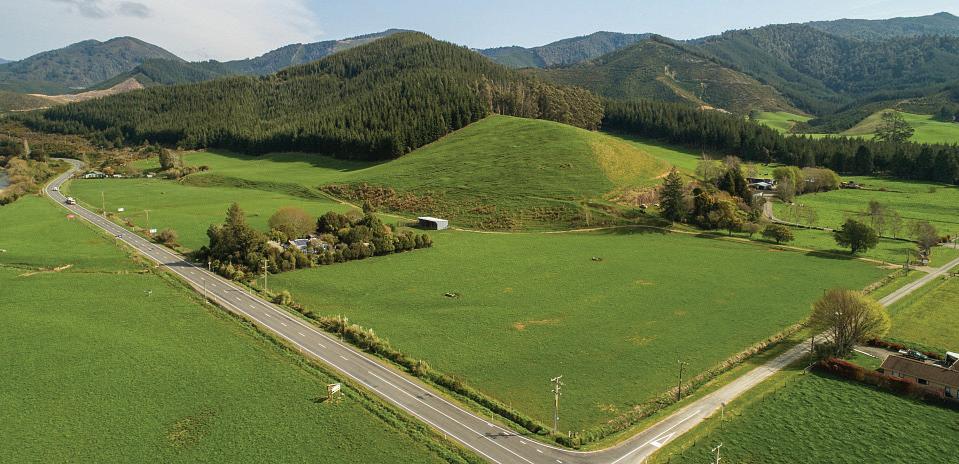

TAPAWERA 368 Tapawera-Baton Road
RAI VALLEY
Peaceful Country Living....!
Hills Road, Rai Valley
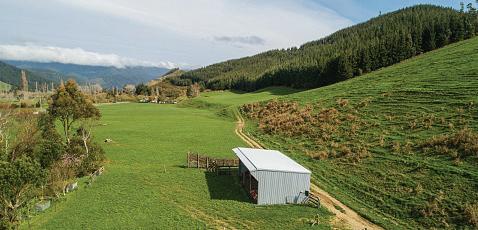
A rarity in the district, 22.4ha on two titles. A flat grazing block of 20.2ha with woolshed, tractor shed, hayshed, and stockyards and a second title of 2.24ha containing the house, pool, four car garaging plus workshop. A spacious 310sqm five-bedroom homestead is set in an elevated position overlooking the farm, facing north for all-day sun, with stunning views of the valley and Western ranges. A large deck and solar-heated pool provide for entertainment and relaxation. The property provides a wonderful opportunity for a family to enjoy the Moutere lifestyle and a property that offers grazing income and a variety of options for the future. Our vendors will sell the 20.2ha bare block, with enquiries over $800,000.
OVER $1,800,000 GST Inclusive
Easy comfortable living here on this 14.5ha lifestyle property. Approximately 4km from the Tapawera Village, this flat fertile grazing block runs along the edge of the Motueka River. The centrepiece is a fourbedroom home centrally placed and set amongst expansive lawns and established easy-care gardens. The living areas and deck face north for all-day sun. Farm improvements include a three-bay implement shed, stables, and tack shed, plus excellent sheep and cattle yards. A bonus is an irrigation consent to irrigate the property. The Tapawera region is a growing destination with a mix of lifestyle properties, traditional farms, the expanding hop and apple industries, and a new motorsport park.
pggwre.co.nz/NEL38263
VIEW By Appointment Only
Easy comfortable living here on this 14.5ha lifestyle property. Approximately 4km from the Tapawera Village, this flat fertile grazing block runs along the edge of the Motueka River. The centrepiece is a fourbedroom home centrally placed and set amongst expansive lawns and established easy-care gardens. The living areas and deck face north for all-day sun.

Another successful sale by Doug Smith of this Rai Valley grazing block which has been purchased by local buyers. The property offers a lifestyle option for our buyers with ongoing income so it is the best of both worlds for vendor and purchaser alike. For results like this call our team now!
Farm improvements include a three-bay implement shed, stables, and tack shed, plus excellent sheep and cattle yards. A bonus is an irrigation consent to irrigate the property. The Tapawera region is a growing destination with a mix of lifestyle properties, traditional farms, the expanding hop

pggwre.co.nz/NEL38484







Nelson Black and Coloured Sheep Breeders Association
People from all across the Top of the South recently came together for the opportunity to find and purchase top quality wool fleeces for crafting, felting and knitting at a fleece seminar in Blenheim.
The morning was run by the Nelson Branch of the Black and Coloured Sheep Breeders Association who were hosting the Association’s 47th National Conference.
The seminar was open to the public and was held while members were out enjoying a bus trip viewing sheep at local members’ farms.
84 fleeces from all over New Zealand were displayed in the seminar room at the Scenic Hotel
Marlborough. Competitions were held for National Fleece, Handcraft Fleece, and Junior Members’ Fleece. The judge for the National Fleece and Junior Members’ competitions said that the fleeces were of a quality fitting for a national level competition, and in fact were among the highest quality fleece he had ever seen. The judge for the Handcraft Fleeces, Mandy Dickie from Christchurch, said there was very little between all the winners and it was very difficult to make those final decisions.
The seminar included two speakers. Sabin Imhasly was born and raised in the mountainous Valais region of Switzerland and said her felting passion has come from her fascination with the process of
turning loose wool fibres into a solid fabric. Catherine Jane, a qualified local fleece judge, spoke of the importance of soundness in wool, (soundness refers to the strength of the wool fibre) and clean fleece weight, and gave some tips on what qualities to look for when choosing a fleece.
Catherine’s information helped many attendees choose a fleece to purchase from those on display for their own craft projects. The weekend was a great success with many people through the doors, some travelling great distances to take the opportunity to purchase fleeces that they usually wouldn’t have access to.
Also on view were members’ sheepskin, craft and photograph competition entries.
days in spring to 90 days plus in winter.
Improves
Eliminates Nasty Odours
A satisfied customer in Hamilton has been using Septi-Cure™ for over five years.
He says this allows them to have an odour free septic tank with low maintenance costs. He also says that his service person is amazed at how well Septi-Cure™ works, keeping their tank in very good condition.
Reduces Costly Pump-outs *Results may vary









Another two large dairy enterprises in North Otago are listed as mortgagee sales. We understand the lack of profitability of both dates back some time, and it seems unlikely that they will be the last.
The best and quickest way of lifting income and reducing costs is by smartening up pasture management, which in many instances is barely understood.
It has been fascinating working with new clients coming from shorter than optimum grazing interval systems. Almost always there’s a lack of awareness of the amount of extra pasture than can be grown when correct grazing intervals are implemented. Too often they’ve used a day-based system with no ability to extend the time between grazings that allow pastures to come close to the end of their rapid growth phase.
The ideal grazing interval is the time required for pastures to fully recover from the previous grazing and get to the point when growth is naturally starting to slow just prior to a stalk with seed head developing. This will vary throughout the year from as short as 20
Regular and careful observation is required and those that have committed to this process have experienced increases of 30%, and more. This often translates to a similar amount of extra milk production, sometimes even higher, at no extra cost.
It takes effort and a willingness to learn and those that are prepared to do so grow immeasurably in their confidence to manage difficult periods which inevitably arise each season.
Winter is a critical time as it is during the slow growth period dictated by both soil temperatures and sunshine hours that dung, old root, and litter left on the soil surface are broken down increasing soil organic matter, laying the platform for spring growth.
Spring growth in the deep south is stronger than in the far north where soil temperatures seldom get below 10°C. Regardless, a long interval between grazings during this time is beneficial.
The use of synthetic nitrogen works against this natural process in two ways. Firstly it ‘burns’ soil organic matter reducing both nutrient and mois-
ture holding capacity. Secondly it stimulates leaf growth during a time when root development is prioritised by the plant, and root mass is an important factor in total growth during the coming season.
An essential concept is that management factors over winter impact on growth in six months’ time, the best operators are well aware of this and manage accordingly. Encouraging the breakdown of accumulated organic matter is essential as soil always has first draw on energy, with plant demand being secondary. Functional Fertiliser has two unique products containing selected beneficial fungi and bacteria formulated to speed the digestion of organic matter and the formation of humus. DoloZest contains dolomite providing the added benefits of markedly reducing calcium/magnesium related metabolic disorders. CalciZest contains the same suite of selected beneficial biology and is usually used in spring to encourage clover growth, significantly removing the demand for applied nitrogen during the growing season. For more information call Peter on 0800 843 809 or 0274950041.















HENRY WILSON
The value of conserving the natural world is of critical importance to Lindy, and is inherent in this, her latest creation. The central character in this story models traits for healthy child development, such as an inquisitive nature, determination, and empathy for others. The story promotes an adventurous spirit, ability to problem solve, and to be resolute in the face of negativity.
The story is imbedded in the natural physical environment and explores our human relationship with it.
Trudi Nicholsons graphic illustrations create a wholly relevant and
supportive contribution woven into the telling of the story. Credibility is enhanced by the writer’s propensity to walk the talk. On her hill country farm, Lindy Kelly has tenaciously maintained and extended a large remnant of original native forest. This now plays a role as an educational facility visited by many school groups and stands as a physical embodiment of the messages conveyed in her latest book.
The story is fiction, suitable for 8-13 year olds and the book is comprised of 32 pages, with full colour illustrations. It is published by Kauri Press. The price is $20.00 which includes postage. Orders to: lindykelly@xtra.co.nz
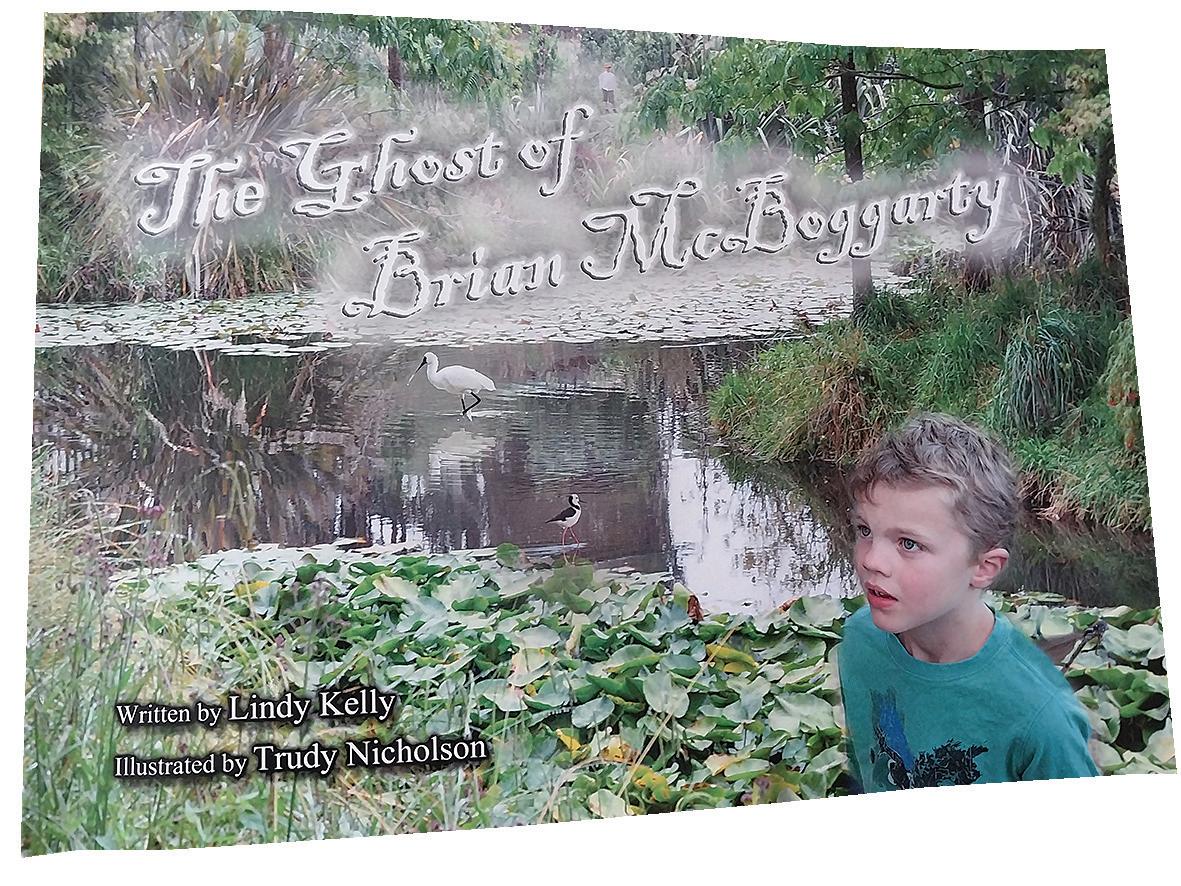







If you have a title that was in grass but is reverting to native bush we may be interested in buying it.
No vehicle access, wetland, steep, gorse, not a problem.
Contact: admin@forestherbs.co.nz

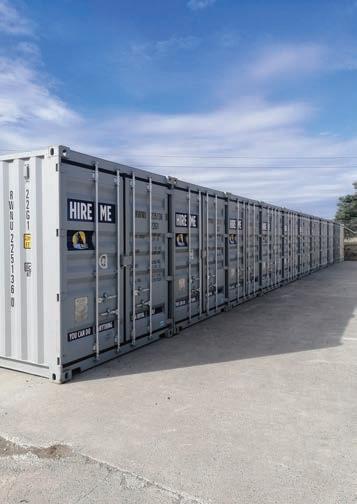
The sinking of the inter-island ferry “Wahine” in April 1968 was New Zealand’s worst maritime disaster with 53 perishing. One of the survivors was former Marlborough veterinarian Peter Jerram, very well known to Marlborough’s farming community.
The author was a member of a Lincoln university cricket team travelling north to play. At a later reunion of the team - all members survived - Peter Jerram promised to write a book on the disaster and gathered recollections from his 14 teammates. The book is in two parts, the first detailing the actual disaster, the second part, an analysis of the sinking and ship officers’ decision-making that may have contributed to the sinking and loss of life.
The first part is riveting, and the second part might have paled in comparison, but Peter Jerram writes skillfully and the postmortem is equally intriguing with the overall result an absorbing read.




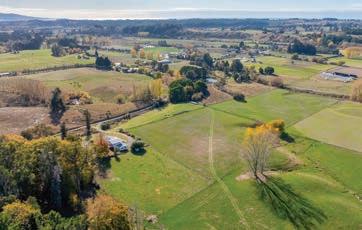
of Upper Moutere
51 Kelling Road, Upper Moutere

A rare opportunity presents itself with this historic farmlet spanning over 17 hectares of lush grazing land, available for the first time in 120 years. The property features a sturdy family home from the 1970s, offering panoramic views of the countryside. It boasts old oak trees, exotic plantings, and native flora protected by a QEII Covenant, alongside the scenic Moutere River running through. Equipped with excellent infrastructure, including sheds, cattle yards, and a shearing shed, it also benefits from the Dovedale Water Scheme for reliable water supply. The spacious home includes an open-plan kitchen, dining, and living area, with 3-4 bedrooms, an office, and a rumpus room. With the potential for dual living, it’s a versatile space. The vendors are not GST registered, adding to the appeal of this unique property. Don’t miss out on this piece of history - contact Toby or Elisha today!

Toby Randall M 027 233 9170
toby.randall@harcourts.co.nz

Elisha Shefford M 021 354 742 elisha.shefford@harcourts.co.nz
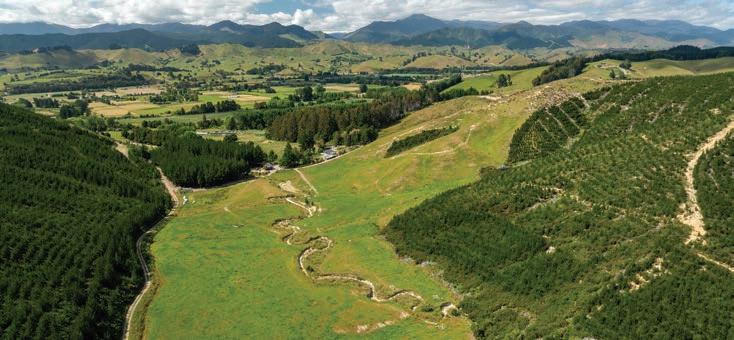
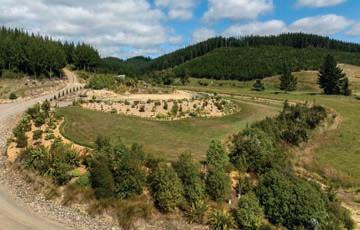
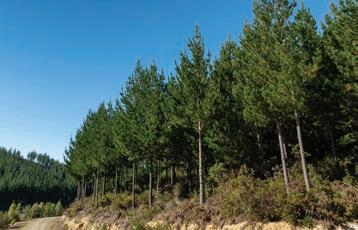
Prime Land: Forestry, grazing and sensational building sites
242 Teapot Valley Road,
Rarely
site offers expansive views. Both blocks are well-tracked throughout, ideal for horse riding, mountain biking, walking, or hunting. Situated in Teapot Valley, enjoy rural seclusion within reach of Brightwater and Richmond amenities.

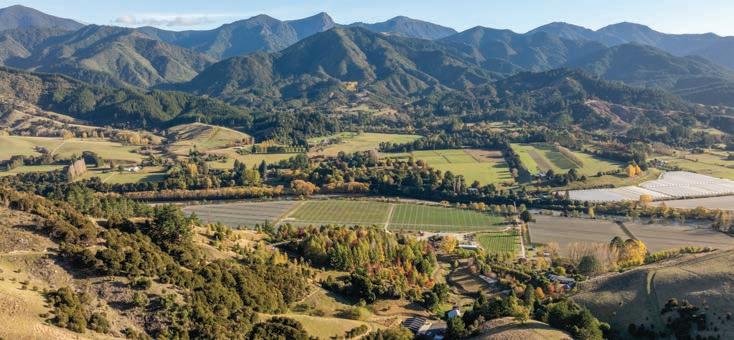

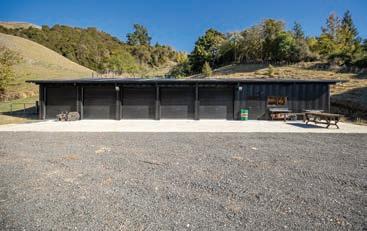
Nestled in the sunny Motueka Valley, this remarkable property invites exploration. Spread over 166Ha, it offers diverse recreational opportunities, from walking to hunting, amidst stunning natural scenery. 122 Ha of grazing land, adorned with mature trees, complements recent upgrades like fencing and a solar stock water system. The land includes approx. 15 HA of forestry and a further 38 HA regenerating native bush, promising potential passive income through the ETS. A charming 4-bed, 2-bath cottage features rustic amenities and overlooks lush gardens. Ample shedding, including a 312m2 workshop, adds practicality. With multiple titles, there’s room for additional dwellings or subdivision, enhancing its allure. Discover this piece of paradise, where the true essence transcends photographs, offering a genuine connection to New Zealand’s beauty.
Tender Closing 5th June 2024, 1pm (No Prior Sale)

Toby Randall M 027 233 9170
toby.randall@harcourts.co.nz
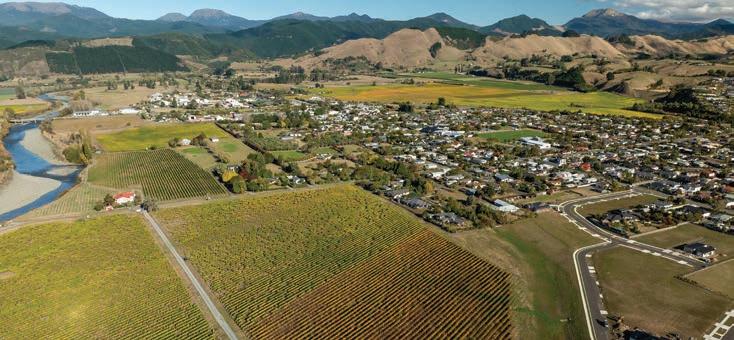
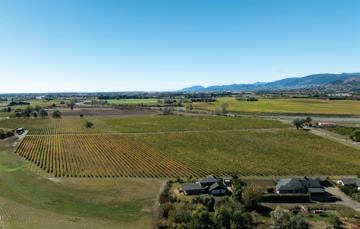
Intelligent investment land bank
100 Bryant Road, Brightwater

Brightwater and its surrounding areas have seen remarkable growth in recent years, with projections indicating further expansion ahead. This 8.5-hectare parcel is strategically identified in the Nelson Tasman Future Development Plan. Its prime location is evident, especially with adjacent lands already rezoned and transformed into thriving residential sections, with new homes being constructed as we speak. The land is currently utilized for viticulture with the grapes sold on contract previously so either continue on like this or there could certainly be options here to lease the land and have it look after itself so to speak
if you don’t want to be hands on with the block.
If you’re looking to sit back and watch your investment grow this is certainly an option you will want to consider. Get in touch with Toby Randall for further information.


Over Easter I loaded up the “Sphere Blue” Hybrid S-Cross and headed for Wanaka. It’s been six years since I last visited an air show that usually runs bi-annually.
Who doesn’t like a great road trip in a brand new car? With three passengers their luggage all in the 440l well-shaped boot, drinks in all four drink holders and an ample supply of fruit and some mints, we were good to go for the 564km trip south. Now here’s the thing. When I last wrote about the S-Cross, it was the ICE only model, no Hybrid and I headed the article Who needs a Hybrid S-Cross? The petrol model I peddled in January 2023.
The Suzuki S-Cross is a significant and important update on the model it replaces. While engine transmission and some electronic wizardry remains the same, the vehicle is almost all new. This, the third generation, has got it right
for both the rural and urban markets. Now with a usable addition of the mild Hybrid that brings brisk acceleration and lower fuel consumption. Interestingly the top spec JLX model is now the only AWD S-Cross offered. It retails at $44,990 though $800 more adds two-tone paint scheme.
The 1.4l turbo petrol now 95kW 235Nm propels the 1200kg curb weight with unassuming alacrity.
The S-Cross provided an easy drive with well sorted NVH and suspension. Braking was kept to a minimum thanks to the paddle shifters on the six-speed auto holding and diminishing velocity on the downhill runs. This also aided the recharge, showing easily on the drivers screen battery indicator. We drove the longer scenic route, eschewing the McKenzie basin in favour of the impressive views of the dams and lakes of the lower Waitaki River. Wide open roads greeted us with virtually no traffic to impede us on the Thursday before the long weekend.

Although the latest model feels bigger, the dimensions are exactly the same, so it’s well packaged, being Suzuki’s biggest and most expensive model. Sadly, it’s let down by budget-feeling trim materials. It also needs to have electric seat adjustment to compliment the heating elements on the front pews.
One of the best camera optics [since Holden’s Arcadia] on the surround camera allows for impeccable views of the whole car from the computer whiz-kid tech. This included Apple Car Play and Android phones being very easy

Even loaded the S-Cross can achieve 4.64.9 l/100km over long distances. Really impressive as shown in the photo above from the cruise computer’s new 9-inch screen. Photo: Supplied.
to pair and stream music through the 9inch central touch screen that has imbedded navigation. USB and AM FM radio are also easy to tune and use thanks to steering wheel controls. Nice touch too is the left side view when parking or entering a tight space. This is accessed by a button immediately below the screen.
Five Star ANCAP safety is covered with seven air bags including one for the driver’s knees. Forward detection via the cameras and sensors as well as the little black radar box below the front bumper power the usual ABS ESP Cross Traffic
Blind Spot and emergency braking. With three drivers it would be nice to have electric assistance for seat adjustment though the standard heated front pews were really appreciated.
I loved the comfortable seats; the ride was firm and the drive engaging. Unsealed roads are so easy with 176mm ground clearance and all-paw grip, meaning the rural sector have another choice for sensible use on- and off-road. I stand corrected, the S-Cross Hybrid is better than the ICE only and it still retains a full-sized spare!




Stuart Drummond Transport is making significant strides in community engagement and education through their innovative initiative: donating Little Trucker magazines to local schools. This quarterly contribution not only promotes the industry but also serves as a valuable educational resource for young minds. Recently 7-year-old Madi Sixtus and 6-year-old Jack Ching of Brightwater school were spotted engrossed in an edition of Little Trucker. By having the Little Trucker magazines available to local schools there is hope that it will help inspire the next generation of forestry leaders as well as foster a deeper appreciation and understand about the role transportation and forestry plays in our daily lives across the Top of the South. Photo: Eloise Martyn
Since 2005 townies, mainly in the UK but also in Australia, have been purchasing spray-on mud in a can to give the illusion that they have been off-road. It is exactly as it sounds – sprayon mud in an aerosol can, the ingredients are dirt, water, and a few small stones, which you then take and spray over your vehicle, like fly spray – but it’s mud. Since 2014 it’s been available in shops throughout New Zealand. A 750ml aerosol can retails for between $12.99$42.99 and mud in a can has a good following in Auckland. While townies might see sprayon mud as a quirky accessory, local farmers that Top South Farming spoke to pointed out, that there’s a deeper issue of trivialization and appropriation at play. For those who live and work in rural environments, the rural lifestyle isn’t just a fash-




ion statement or a novelty; it’s a way of life rooted in hard work, connection to the land, and the challenges of rural living. To them, spray-on mud seemed like a superficial attempt to mimic something they deeply understand and appreciate. Additionally, the farmers’ perspective underscores the value of authenticity and genuine experience. Rather than purchasing a can of artificial mud, why not engage in activities that allow for real connections with nature and rural life? Making
one’s own mud or actually going for an off-road drive can provide a more meaningful and authentic experience. One farmer did suggest that he might buy a can and ‘Mud-up’ up his mate’s Classic MG that isn’t allowed a spec on it so perhaps mud in a can has its place in the humour department. Whether one loves or loathes the idea of spray-on mud, it exists and it’s out there, perhaps in many ways serves as a reminder of the complex dynamics between urban and rural.


MUTTON
Demand out of China remains subdued, however the true test will come when seasonal volumes lift from New Zealand and Australia over the coming months. Our strategy of diversification remains important as we target Taiwan, Malaysia, the EU and North America.

The Chinese economy remains under pressure with consumers continuing to save and dine at home rather than eating out. This has a significant effect on lamb, which is traditionally a food service item. The North American market remains steady with good demand for the full range of chilled and frozen cuts into both the retail and food service sectors. In the European Union and United Kingdom, demand is steady with a seasonal switch from roasting joints to grilling items. The Middle East continues to provide a volume alternative for commodity products.

weaker market in China, we are only producing bones, offal and rib items as China is still a viable price option.
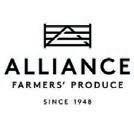
The Chinese market remains challenging as inmarket stock volumes remain above average for this time of year. Market activity, as we build towards the Chinese New Year, will determine future consumption and pricing. In the EU and UK, market sentiment is improving as we approach the critical Christmas selling period. Consumption is the key as opposed to any significant shift in price. The Middle East continues to provide alternatives for commodity products previously destined for China.

Demand out of China remains subdued, however the true test will come when seasonal volumes lift from New Zealand and Australia over the coming months. Our strategy of diversification remains important as we target Taiwan, Malaysia, the EU and North America.
Lower seasonal production is supporting us to diversify away from China into wider Asia, namely Taiwan, Malaysia and Singapore. The EU/UK and North America markets continue to be a viable option for certain cuts.

Game season chilled sea freight shipments are continuing with the final vessel due to depart later this month. Market demand and pricing are firm with supply well short of demand. Manufacturing items have been challenging but recent retail sales in the US are providing a degree of stability as market conditions improve.
The veal market remains firm as processing now significantly reduces, which is in line with normal seasonal trends.
Key account frozen programmes are well advanced with shipping underway. Early discussions for the 2024 game season have begun with the market understanding potential shortages, which is assisting demand. Chinese demand remains firm for both manufacturing and commodity cuts as they establish product options that suit local cuisine. The manufacturing trim market is firm with demand exceeding supply.

Most beef cut production has ceased for China and is being diverted to higher paying markets. Many importers are waiting for a major trade show in Shanghai later this month before they make any strategic buying decisions in the short-term. Importers do not foresee any improvement in the next 3-6 months as the market digests large South American arrivals from the first quarter of 2024.
The US market for beef has eased in the last few weeks as importers bid down key lean grinding packs. US importers are leveraging the bad news from China, plus the larger than expected supply of feed-cattle in the US.
Woolskins: We are continuing to see reasonable demand for the lower woolskin grades (fellmongery grade). The focus is now on supplying existing contracts from plants that are still processing before offering any more stock for contract.
Hides: Demand has continued to weaken across the grades. As a NZ-origin product, it is still an attractive option for Chinese buyers due to its higher quality.
Petfood & Offal: Contracted volumes are moving now that international inventory is starting to reduce.
Meal: There is good demand and improved pricing for standard ovine.
We have seen further deterioration in the Chinese beef market after the Golden Week celebration with wholesale prices softening in recent weeks. The supply of domestic cattle remains high with pricing dropping sharply in the last few weeks. The price of domestic cattle is 33 per cent lower compared to a year ago. In response to the
There has been little change in the Chinese market as the country takes a break for its National Day celebration with the market closed for seven days. The US market is also in a holding pattern as importers are carefully managing their inventory with most talking down the prospects despite the data indicating a lift in confidence. We expect imported lean beef to be stable in value with pricing expected to increase in the months to come. The long-term outlook for China is for pricing to stabilise and demand to be steady. For North America, the long-term outlook is for demand to firm with prices stable, and slowly improving.
Increased Australian volumes shipped to the United States is another lever for importers, with volume doubling compared to 2023. South American shippers are positioning themselves to ship beef to the United States in the second half of 2024 due to the troubles of the Chinese market, putting further pressure on the market.
Meat and Bone Meal: There is mixed pricing following a softening last week, although this is now holding. The Ramadan close-down in the key Indonesian market is impacting demand.
Tallow: Pricing has lifted slightly.
Casings: Annual contracts have been secured, protecting us from the market softening
INGREDIENTS & MATERIALS





May’s a funny month, you’re hanging onto the autumn weather and good times that were had over summer, knowing fully well that winter is around the corner, and it’s going to get cold and ugly. This is usually the case for our industry as log prices generally start heading south in late autumn and rain is not our friend. However, winter came early in terms of southward heading log prices, with a significant drop in April that extended into May with mainly flat pricing at the $106/ JAS level for A grade. Thankfully the weather has played ball with reasonably dry conditions to date, but this is cold comfort if your logging gear is parked in the paddock.
There were some hopes that May would see a price increase of substance but, with both the foreign exchange rate and the shipping costs having Julie Anne Genter levels of volatility during April and early May, our hopes have been dashed. There is some good news simmering away in the background as Chinese on port inventories stabilise and demand increases into the 72km3 per day range. Supply from NZ has dropped significantly following the poor April prices and a quickly slowing CNI salvage volume. This will likely not have an impact on the CFR price (sales price in China) in the short term until inventory gets to an uncomfortably low position.
The Chinese economy grew at a
faster rate than predicted in Q1 with GDP at 5.3% against a Reuters poll of analysts that expected 4.6%, however it looks like the growth was primarily front loaded with March data weakening. Property remains the red-haired stepchild with Reuters reporting new house prices falling faster in March than any time in the previous eight years. Sales plummeted 23.7% in March compared to 20.5% for the previous two months so it’s clear that any significant rebound in construction is still a pipe dream.
A recent Chinese trade delegation to NZ was wowed at our wooden commercial construction, and there was a definite interest in understanding how NZ’s construction techniques and technology could be commercialized in China. It was clear that the aging Chinese population is reasonably cashed up and not necessarily interested in living in a 500-story concrete and steel apartment block. If we could help develop this market segment it may provide significant demand for NZ radiata by placing more wood into a smaller but differentiated construction sector. For perspective, the wood usage per capita in China is less than 0.4m3, compared to India at 1.61m3, and a global average of 0.55m3. This indicates that there is potential of an additional demand of 210 million cubic metres if China reached the global average. There’s been a significant reduction in non-NZ supply into China in the past 12 months with Europe dropping to around 250Km3
per month and the Pacific Northwest steady at 180Km3. Australian export supply is minimal and is primary headed to India, and NZ also has a couple of vessels destined for the capital of cricket. While we still have fumigation issues with Indian shipments, any vessel headed to our commonwealth partners takes supply away from China which is a positive.
Domestic demand still remains solid although the indicators are not looking flash for the NZ construction sector in the short term. Although core inflation was lower than expected, non-tradable inflation was stickier than a half-sucked wine gum, which will give Adrian Orr the mandate he needs to keep beating us over the head with his interest rate bat.
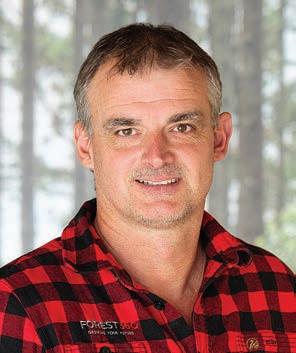
Understandably, until we see a reduction in interest rates, the NZ construction sector will remain decidedly average.
Nothing to see here on the carbon front with NZU’s trading in the mid $50’s for the last few months. It’s the same story as previous months with plenty of
supply and average demand as most large emitters have covered off their obligations in the short term and the speculators have left the building, for the time being. This price point still provides for a very tidy return of around $1,605/ha and, with current returns from sheep, there will be many farmers very thankful for including carbon in their cashflow.
So, in summary, it’s been a very volatile few months in terms of export price, and we’re currently stuck on a rinse cycle. It’s unlikely that June will see us over the $120/m3 hurdle, but we are forever hopeful. It will more than likely be August before returns are at a level that will stimulate increased supply. Let’s hope the spin cycle is a bit more user-friendly.

6pm Friday 19 July 2024








PleasecheckyourproofcarefullyandapproveitorsubmitcorrectionsbytheFinalProofAlterationsdeadline. veorsubmitchangestoyouradwithinthe emailtoviewyourad,then cl icktheAPPROVEorCORRECTIONSbuttonrightfromthere
06/24/21 CH-8994297AA(100%) publication AdvSuppNEM section CUSTOMSQUARE

PleasecheckyourproofcarefullyandapproveitorsubmitcorrectionsbytheFinalProofAlterationsdeadline. cannow appro veorsubmitchangestoyouradwithinthe ATOLsystemat a timethatsuitsyou. Justfollowthelink proof emailtoviewyourad,then cl icktheAPPROVEorCORRECTIONSbuttonrightfromthere - nonewemailsrequired!
Recently a group of foresters, sawmillers, and forestry professionals gathered at the “Logs 2 Lumber” worksite in the Moutere Hills where Justin Wells, Managing Director at Logs 2 Lumber, specializes in milling native and alternative species; that being anything other than Radiata pine and Douglas Fir. There was an interesting display of quarter sawing, a method which generates a very stable board from species that are generally considered firewood. This method also displayed a completely different grain feature to the more typical flat sawn board and is very attractive. Participants walked around the yard stopping at each pile of logs, Justin explained the various considerations specific to each species and end use. There were several portable sawmillers present who, like Justin, cater to farmers and small block holders wanting the lumber for their own use. Most of these exotics do not need treatment so transport and
handling costs can be kept to a minimum.
The second part of the day was presented by Chris Ensor and Gerry Dysart of Mosaic Aotearoa, a new forest advisory and project management company. Both men have been years in commercial forestry but now hope to focus on land use achieving “ecologi-

cal and operational harmony”. To complement their promotion of high value species, they have generated a “Mosaic Forest Register”. Chris says as log marketeers they had often seen high value logs being sent to low value export markets due to local sawmillers being unaware of availability and thus unable to develop markets and
forecast supply. The sawmillers jumped in here saying they would love to know what wood was available now and into the future. You can register at their website, www.mosaicaotearoa.com. There was also lively discussion on the present state of the ETS, (The New Zealand Emissions Trading Scheme) management of “low in-
tervention” or regenerating pine forests, leading to the ever-present subjects around biomass, generation, form, transport, and low-valuecosts. If you are interested in trees or wood, come to one of our field days. Email Pj from the Nelson branch of New Zealand Farm Forestry pretty bridge@xtra.co.nz
The Professional Forest Management Company of choice
TheProfessionalForest ManagementCompany ofChoice. PFOlsenistheleadingproviderofindependent
TheProfessionalForest ManagementCompany ofChoice.
PF Olsen is the leading provider of independent professional forestry services in New Zealand. Contact us now for all your forest management needs:
PFOlsenistheleadingproviderofindependent professionalforestryservicesinNewZealand.
• Carbon accounting and
Contactusnowforallyourforestmanagementneeds:
•
•Harvestmanagementandlogmarketing
•Forestestablishmentandtending
•Forestvaluations
•Duediligenceonforestpurchases/sales
•
•Duediligenceonforestpurchases/sales




With 25 years experience in the industry the Tasman Forest Management (TFM) team offer services in:
• Forest and woodlot harvesting
• Domestic and Export Log Purchase
• Forest Establishment
• Emissions Trading Scheme advise and management
• Forest Valuation
• TFM are part of the Forest Management Group with offices throughout the South Island, Hawkes Bay and Southern North Island

Immediate changes to the Accredited Employer Worker Visa (AEWV) scheme were intended to ensure New Zealand attracts the skills it needs. But forestry, alongside other primary industries, is concerned the changes will create greater uncertainty for primary industry workforces. Changes to New Zealand’s immigration settings were announced on 7 April by Immigration Minister, Hon Erica Stanford. The Forest Owners Association (FOA), the Wood Processors and Manufacturers Association (WPMA), and the Forest Industry Contractors Association (FICA) submitted a joint letter to Minister Stanford outlining the impact on forestry and wood processing.
Crucial points noted were the stress placed on employer’s health, safety, and well-being from the potential staff shortages; the significant impact on business continuity under the new requirement that migrant workers must leave the country for 12 months before they can return and progress into a skilled worker category; and that many jobs in our sector are not well suited to the simple qualification tests that are now mandatory.
While it is important to support infrastructure that will reduce pressures and migrant exploitation, the right balance must be struck between supporting rural employers, and therefore their communities.
The FOA, WPMA and FICA have requested a meeting with Minister Stanford to find a resolution to these issues.



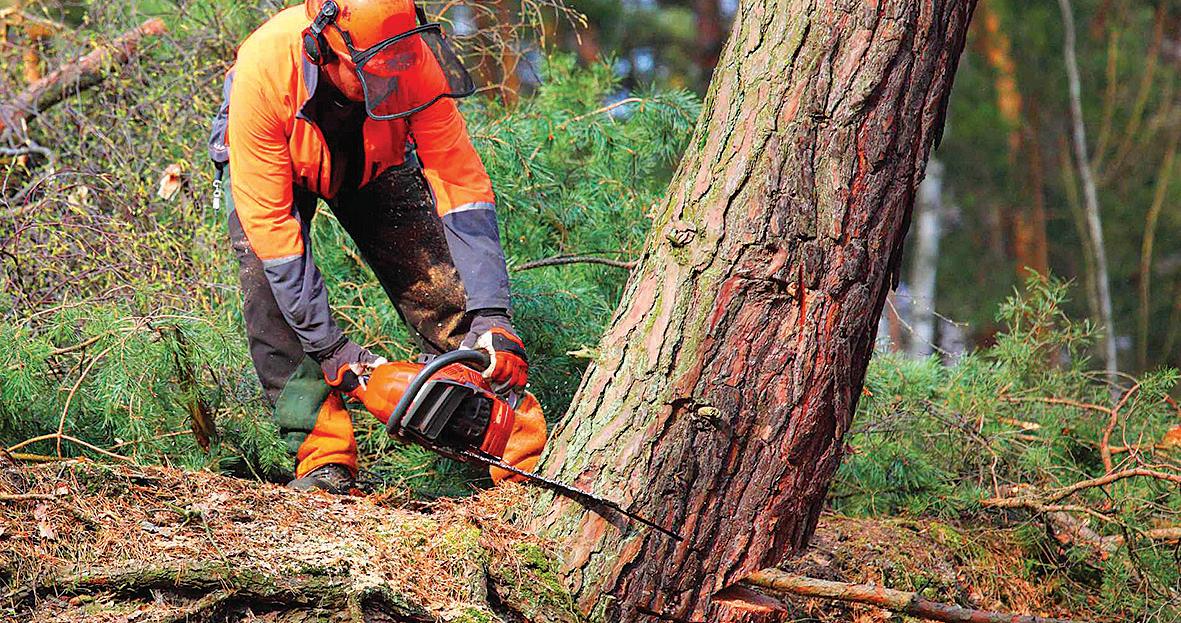
Recent Healthy & Safety stats released by Safetree NZ for March 2024 indicate that overall, there is a ‘downward trend’ in forestry workplace injuries and fatalities. While injuries are evenly spread across silviculture, harvesting and unloading/loading log activities, the majority of injuries requiring time off work is in silviculture. Injuries and fatality rates are also higher in forestry than industry averages across New Zealand. WorkSafe provides statistics on forestry workplace injuries and fatalities which assist in identifying any key issues or trends.
In a world where the agricultural industry has long been dominated by men, the rise of female farmers is a powerful and inspiring trend that is reshaping the way we view farming.
Women in agriculture are bringing innovation, sustainability, and a unique perspective to the fields, quite literally.
“I think over the past 10 years everyone has seen what women are capable of and that is helping to change perspectives,” says multi-talented, Jill of all trades, Cindy Little.
Cindy has carved her own unique path in the world of agriculture, animals, and adventure. From the sprawling landscapes of Canada to the sun-kissed fields of Australia, Cindy is a testament to what women in agriculture are capable of.
Growing up helping on the family farm and horse riding, gave Cindy her love for farming and animals which later inspired her to complete an agriculture degree, with honours at Massey University.
With degree completed Cindy headed to Canada where she worked taking care of horses at a

trekking and hunting establishment. From there she moved to a Canadian cattle feedlot housing 25,000 beef cows where she spent a lot of time on horseback looking for sick or weak cows, as well as helping with cropping to be used in the feedlot.
Canadian winters are long and very cold, so Cindy welcomed the opportunity to help with the Australian grain harvest. After which she headed home to NZ with her
experience for the hay contracting season which she enjoyed. For the next few years Cindy repeated this routine and spent time each year in each country.
“For earlier generations of farming women, life was incredibly tough, and women worked extremely hard and, with that in mind, it’s amazing for me to be able to have done all of this,” Cindy explains.
“Women are increasingly be-
ing viewed as great assets to the farming industry and many employers are realising that women are generally gentler on gear and equipment and often have a softer, but practical, hand with stock which has good results.”
Cindy says that while she can do most things a man can there is the odd thing that can be tricky.
“Some things I physically can’t do without putting myself in danger, men are physically different and
have more muscle strength, so I have to find creative ways to get around some things,” Cindy explains.
Managing a sheep, beef and deer farm was the first role Cindy took on when she moved back to NZ permanently. Keen to be available to contract over the warmer months Cindy left this position to take on more casual sheep and beef farm work.
“It’s definitely getting harder to secure full-time employment doing split jobs,” Cindy says.
“The variable weather and the market has everyone stressed out and trying to cut costs plays a big part. However, when it’s all going well it is really great so I’m keen to continue and see what the next 12 months brings for me.”
Increasing recognition of female farmers like Cindy in local rural communities is on the rise and Cindy says t’s great to see women locally getting recognised and accepted for their work.
My grandmother farmed our family farm on her own after my grandfather passed and found farming very tough. It was a male dominated industry and women struggled to get ahead, she would be amazed and inspired at how far farming women have come.”



AgriZeroNZ, the joint venture (JV) fast-tracking emissions reduction tools for Kiwi farmers, is doubling down on efforts to deliver a methane vaccine with an investment in U.S. ag-biotech start-up, ArkeaBio. The JV has invested NZD $9.9million (USD $6m) to accelerate ArkeaBio’s development of a methane vaccine for ruminant animals, including cows, sheep and deer, with an initial focus on cattle.
It is AgriZeroNZ’s second investment in vaccine development, having already invested in the New Zealand research programme. AgriZeroNZ chief executive Wayne McNee, says the JV is backing two vaccine projects to increase the chance of delivering the highly sought-after, worldfirst solution.
“A methane vaccine for ruminant animals is internationally recognised as the ‘holy grail’ to deliver methane reduction at low cost and mass scale. It could be one of the best long-term options to really shift the dial on agricultural emissions in New Zealand without compromising farm profitability, as well as a powerful tool globally. It would be a particularly useful tool for our grass-fed animals and a good fit for our pastoral farms as vaccination is already commonly used to support animal health. We’re really pleased to be supporting ArkeaBio and its innovative approach to develop this
important solution to help farmers curb emissions.”
ArkeaBio is based in Boston and led by Kiwi expat, Colin South. The start-up recently completed US$26.5m Series A venture financing to support process development, trial expansion, and defining path to market. This financing was led by existing investor, Breakthrough Energy Ventures (BEV), with new investments from AgriZeroNZ, The Grantham Foundation for the Protection of the Environment, Rabo Ventures, Overview Capital, and The 51 Food & AgTech Fund.
South said they are pleased to have AgriZeroNZ join its round, which provides both funding and a close relationship with an important and motivated early market for their global solution. A vaccine would be a critical tool to help farmers achieve AgriZeroNZ’s ambition of reducing agricultural emissions by 30 per cent by 2030. McNee says this is crucial for New Zealand, to meet global customer targets, protect trade agreements and support the country’s climate goals.
AgriZeroNZ is half owned by the New Zealand government, with the other half owned by major agribusiness companies – The a2 Milk Company, ANZ Bank New Zealand, ANZCO Foods, ASB Bank, Fonterra, Rabobank, Ravensdown, Silver Fern Farms and Synlait. These shareholders are providing $183 million for AgriZeroNZ to achieve its ambition.



Holding rainwater for future use is one of the topics that is being discussed recently. We are having really dry spells followed by really wet weather. This not ideal for any of us. Many are feeling helpless in the face of floods and the devastation that it brings. The clean-up from these events is both time consuming and costly. People who monitor our rivers also tell us that there are significant changes to the rivers as the flood size and frequency increase.
As we shift into a new pattern of weather events, how can we improve our resilience of our land and farming practices to improve our wild swings from drought to flooding.
As well as infrastructure preparation and water storage which comes at a significant cost, there is an opportunity that lies beneath our feet.
Soil carbon is a gigantic sponge. It is estimated that an extra one percent of carbon that is 30 centimetres deep will increase the water holding capacity of the soil by 187,000 litres per Hectare. To put some context to this, 10 Hectares of soil with one percent extra carbon would hold the amount of water that is in an Olympic swimming pool. This is a significant amount of water. A healthy well-functioning loam soil which has an increase of five percent of soil organic matter through developing new soil management

practices will store approximately one million litres of water per Hectare to a depth of 30 centimetres.
Scientists tell us that a top performing healthy loam soil with very high organic matter (OM) is capable of infiltrating up to 250 mm per hour of rainfall in one hour. Bearing in mind rainfall that totals over 40mm per hour or more can bring catastrophic surface flooding such as occurred in Tasman during Cyclone Gita, the potential for soils therefore to both mitigate localised on-farm damage and downstream flood damage, while storing water for summer droughts, is immense.
Soil infiltration rates give a good overview of how well your own soil is functioning in relation to water capture and will only cost a little of your time. To find out how,
contact us at Fertilizer NZ. The more of the heavy downpour can infiltrate your soil, the less this water will impact your farm and your neighbours downstream. Visualise the worst rainstorm possible on your property, imagine if the bulk of it ends up running off the surface of your property and concentrating into the gully flow rather than soaking in. This is where a picture of poor soil infiltration rates become apparent during an unforeseen storm.
Fertilizer NZ can help in conducting the infiltration tests and show how more carbon can be added to your soil to mitigate some effects of a storm and lead to having a lesser impact on your property when a drought occurs.
For more information contact us at www.fertnz.co.nz or 0800 337 869

 Marlborough Federated Farmers
Marlborough Federated Farmers
Federated Farmers will consciously increase the proactive side of its advocacy on behalf of farmers, Federated Farmers NZ vice president Colin Hurst told the annual general meeing of of Marlborough Federated Farmers recently.
Historically, Federated Farmers have tended to be reactive but, he said it is much more effective being pro-active, building networks, lobbying effectively, talking to local councils and seeking wide relationships.
“We’ve modified our profile to growl more,’ he laughed.
The previous Labour government, supported by the Green Party, had brought in numerous unworkable and expensive regulations.
Fencing streams on extensive properties with low stocking rates had the potential to cost farmers hundreds of thousands of dollars, for little environmental gain.
“With the change of government, it signalled the end of the war on farming, but assessing changes come with an air of caution and Feds will be watching closely, he said.
“Current rules are impractical, completely disconnected from the reality of farming, devoid of all common sense, and heap a ton of unnecessary costs on farmers.”
Colin Hurst said Resource Management Act reform has been a big win for Federated Farmers NZ with the first raft of changes due within weeks.
“We need to be empowering farmers and supporting them to make further improvements on their farms instead of tying them up in needless red tape.”
Concerning the controversial Fast Track Approval bill the government is pushing, Federated Farmers “cautiously supported” it but wants specific changes to protect private property rights where projects are proposed on private land.
Vice president Richard Dawkins complimented Colin Hurst and Federated Farmers NZ on its aim for increased proactive advocacy.
‘There’s a big difference between being an advocate and activist. Activists tend to make extreme statements,” he said.
Colin Hurst replied that the media always asks Federated Farmers for comment as they know it is the “voice for farmers”.
“We’re talking to as many political parties as practical, looking ahead to future elections and future governments.”
In later discussion matters such as the vexed question of Kenepuru Sound Road access came up. Marlborough District councillor Ben Minehan said farming down the Sounds is not viable in the long term, without road access.
Election of Officers
President: Evan White, Vice-presidents: Richard Dawkins, Cath Baker, Treasurer: Gary Barnett, Meat and Wool chair: Catch Baker, Dairy chair: Hamish Morrison, OSPRI chair: Greg Woolley and Forestry chair: Chris Dawkins
Marlborough farmers have been encouraged to keep feeding out and provide extra nitrogen in Spring to help boost plant growth to combat dryland conditions and promote drought recovery.
Professor Derrick Moot leader of the Drylands Research Programme at Lincoln University suggested to a group of Marlborough farmers on pasture drought recovery following the dry summer conditions prevailing throughout the region. He encouraged farmers to keep feeding out to allow pastures to recover following the recent 70mms of rain.
“Four elements influence plant growth, light, temperature, water and nitrogen. We can do nothing about the temperature and water on dryland pastures but can influence how much light is captured by the plant and the quantity of nitrogen available,” he said.
“Treat your pasture like a solar panel allowing the plants to recover and capture as much light as possible by allowing them to increase leaf area,” he said. If the pasture is grazed too soon, leaf area will be removed exposing bare soil and moisture will be lost. Microbes in the soil will have mineralised nitrogen from organic matter and this will be available for new plant growth. Extra nitrogen can be provided in spring to boost plant growth. Professor Moot advocated drilling sub clover to provide feed for lambing ewes.
Cereals such as Omaka barley and oats for winter feed can be sown as the seeds will access the deeper moisture from the soil. He maintains that perennial ryegrass in dryland pasture will not have survived the high ground temperatures prevalent in summer which can rise to 48 degrees.
The best grass species for dryland is cocksfoot. Research carried out at Ashley Dean in Canterbury showed that cocksfoot on dryland will produce 6.5 tonnes of dry matter per hectare, with the addition of water the pasture will produce 10 tonnes and with water and nitrogen this will increase to 22 tonnes. After three years only 10 per cent of the ryegrass and white clover plants will be present in the pasture while lucerne will still be there after seven years.
The most limiting factor on a dryland farm is nitrogen which is why Professor Moot has, for many years, been promoting the use of legumes, particularly lucerne.

The deep-rooted plant can access moisture unavailable to shallow rooted grass varieties whilst fixing nitrogen and carbon in the soil. It will fix 25kgs of Nitrogen per tonne of legume and will be producing leaf area when the lambs need it most, while at the same time, rye grass will be going to seed. In wetter areas mixed pastures of hickory, plantain and clovers are more suitable. By the third week in August lucerne can be lightly stocked so that not every lucerne stem is picked. Rotational grazing grows roots while set stocking will promote leaf growth. So, it is important to have more than one paddock of lucerne on your property. Allow the lucerne to flower in February.
The Averys, at Bonavaree, sow prairie grass amongst the lucerne to provide earlier growth in the spring and to provide animals with a

choice of nutrition. They also advocate fallowing paddocks to conserve moisture, then sowing cereal in February for grazing in autumn and winter. Forward planning is essential when farming in dryland situations.



At the recent AGM for Nelson Federated Farmers, key discussions centered around local agricultural challenges, policy advocacy, and community engagement. The group, of around thirty farmers, reviewed progress on initiatives aimed at supporting farmers in the region, such as sustainability practices, land management strategies, and navigating regulatory changes as well as providing a platform for members to voice concerns, share insights, and collectively shape the organisation’s priorities moving forward. The process of appointing executive board members was conducted with some fresh names and faces being added to the mix. Election results are as follows:
President -Stephen Todd, Meat and Wool Chair- Kerry Irvine, Diary Chair – Brian Dineen, Treasurer- Rachel Fraser, Sharemilker ChairBrendan Lochhead and Vice Dairy Chair- Emma Rankin. Board members: Martin O’Connor, Claire Parkes, Colin Gibbs, Barabara Stuart, Peter Moore, Eleanor Greenhough and Ray Borcovsky.
President Stephen Todd said he was pleased to retain a great team alongside him and was grateful for the new people coming in and strengthening the team, enabling the group to operate more effectively. Stephen also commented, ‘ We are a
ground-up organisation so it’s great to have a strong team feeding direction and information up to feds National.’
The guest speaker; Toby Williams, National Board member, and Meat and Wool spokesperson, addressed declining membership due to farm loss to forestry. He urged cost-cutting at HQ, and faster government engagement, and criticized inadequate produce marketing. Passionate about wool, he advocated for its potential and sustainable practices and challenged synthetic carpet dominance. His talk was well received by all.
Tasman-based Natasha Berkett, the new Principal Policy Advisor for National Federated Farmers (Wellington head office) also spoke during the AGM. Natasha, based in Tasman, brings a science background from her work at the Cawthron Institute and Waimea Irrigators, leveraging her expertise to address policy gaps. Her local presence enhances her ability to influence scientifically sound decision-making effectively.
The AGM concluded over a delicious afternoon tea and with an executive board full of younger energetic, passionate, and dedicated farmers and advocates, backed by other board members with decades of experience, many felt that the seeds were sown for a brighter, more sustainable future for both the Nelson province and for agriculture locally and nationwide.
Tasman has made significant strides in the past decade towards Bovine tuberculosis (TB) freedom, however, other regions such as the Marlborough High Country remain high-risk, requiring Tasman to continue vigilance.
TB is an infectious disease of stock, carried and spread by host animals such as the possum.
“In the mid-’90s through till the early 2000s, there were several farms, including ours, that fringe the Kahurangi National Park that had stock infected with TB from possums in the Kahurangi,” Tapawera dairy farmer and past TB Free Committee member
Phil Riley says.
“TB kept popping up and it really wasn’t until everyone got stuck into pest control in the Kahurangi that TB here disappeared.”
Phil says we don’t want animals with TB because of the restrictions placed on exporting animal products when TB is present. Stock movement restrictions make farming incredibly challenging, as well as the slight chance that TB will be transmitted from

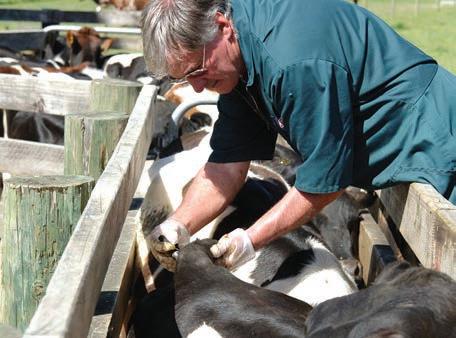
animal to human.
“With restricted stock movement you can’t graze your animals anywhere else, and you can’t sell them. No-one would want to buy TB-infected animals anyway.”
With neighbouring regions struggling to control TB the risk to the Tasman area is always around.
Efforts to combat TB included regular on-farm testing, ground-based possum control, and aerial 1080 operations.
Local meat works also inspect carcasses for any lesions or visible signs of TB.
“Our cows are tested each year by OSPRI. They place an injection of tuberculin by the tail of the animal and come
back three days later to measure how the cow has reacted to it. If a small lump has developed then further tests and investigations are carried out,” Phil says.
OSPRI is a partnership between primary industries and the government. They manage two national programs – NAIT, National Animal Identification and Tracing- an online tool used to trace the movement and location of animals- and TBfree. They also support the delivery of the Mycoplasma bovis (M. bovis) Eradication Programme.
Upper South Island OSPRI extension services/ Regional Partner, Heather Alexander, says: “The current initiatives have
proved successful in reducing TB within Tasman and ongoing testing of farmed deer and cattle now provides evidence that local possum control has effectively decreased TB levels on farmed properties.”.
“The Tasman area has a history of TB in both local wildlife, wild pig population and possums were identified with TB infections back in the early 2000s. From the mid 90’s to early 2000’s there were close to 30 herd breakdowns in the region with the last TB herd here cleared in 2013.”
Both Phil and Heather agree that while TB control in our region has come a long way, we still need to keep up with our vigilant testing, monitoring, and recording as it could pop up at any time. It’s this information that can assist in a much quicker and effective response.
“We’re confident that the risk of TB reemerging here is low, but not zero,” Heather says.
“Do your testing, keep on top of animal NAIT movements, and consider doing some possum control in your area to keep those pest numbers low.”

I’ll begin with a weather report. Short and sweet: mostly good, no catastrophes, but the prolonged El Nino dry is challenging some exposed coastal properties and has taken care of the early season feed surpluses for some.
This year our locally specific issues have included adding our voice to concerns about gravel build up in local rivers and promoting the use of wool carpets in local school upgrades (unsuccessfully).
We, together with Nelson Province, submitted to TDC on its Regional Land Transport Plan, the proposed new cat bylaw and more recently on the Long Term Plan. We endorsed support of the local A&P Show, the local Veterinary Society for their proactive stance with the new Pacifica Lepto vaccination programme and continued our long-standing sponsorship of
Agricultural trophies for both local high schools.
Attracting new energy
Special thanks go to our executive members whose dedication to the institution of Federated Farmers have helped preserve this living heritage for so long. The lack of time and resources and a general rural apathy appear to be impacting on attracting input for voluntary causes, We live our lives differently now to when Federated Farmers, the Women’s Division (now Rural Women New Zealand) and Country Women’s Institute served to connect rural folk. Each small community had its own school, church hall or watering hole and regularly held gatherings, eliciting strong views on local issues. Nowadays, the speed of modern life has us flicking between online meetings and digital group chats. We are now both better and less connected to our neighbours. More and more, farming dis-
cussions are of a national focus. And herein lies the challenge for attracting input from members. They have become distanced from feeling as though their voices are being heard or valued. It’s interesting to see that, while farmers seem to be disengaging from nationally focused bodies, the rise of localism via catchment groups appears to be like a return to the past.
Stepping down
It has taken me a long while to write this report. It will be my last as I will not stand for re-electionI have decided to focus my limited resource on our own catchment, which is all about the Waikorupupu Springs Water Conservation Order.
This decision is not taken lightly, especially as no other members have been enticed to join the executive and it looks likely that our province has a limited future as a fully-functioning independent province.
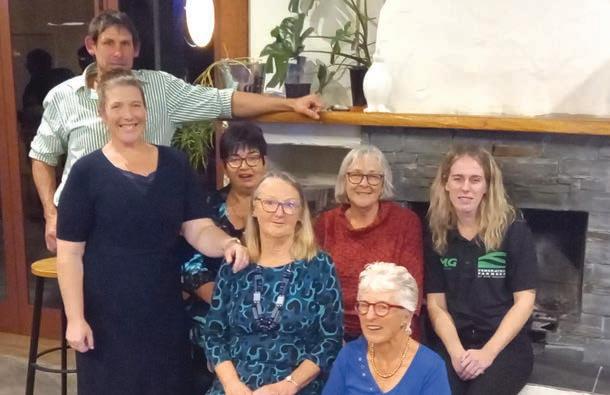
Thanks
I thank those who have supported me along the way. Input from our policy staff has been exceptional: thank you to Natasha Burkett and her predecessor Emily McDonald, Stephen Todd, President of the Federated Farmers Nelson, and Sandra Falkner. Lastly, thank you to my husband, best mate and enabler Robert I couldn’t have done it without him.
Election Result
The following people were elected at the 2024 Annual General Meeting of Federated Farmers Golden Bay: Sue Brown, President; Cherrie Chubb, Immediate Past President; Pax Leetch, Meat & Wool Chairperson; Tyler Langford, Dairy Chairperson. Executive members: Ann Thompson, Daphne Woods (Administrator/ Accounts), Maree Edwards (Minute Taker).
Delivered to all rural homes from Greymouth to Golden Bay and Kaikōura to Marlborough Sounds. We’ve got you covered.
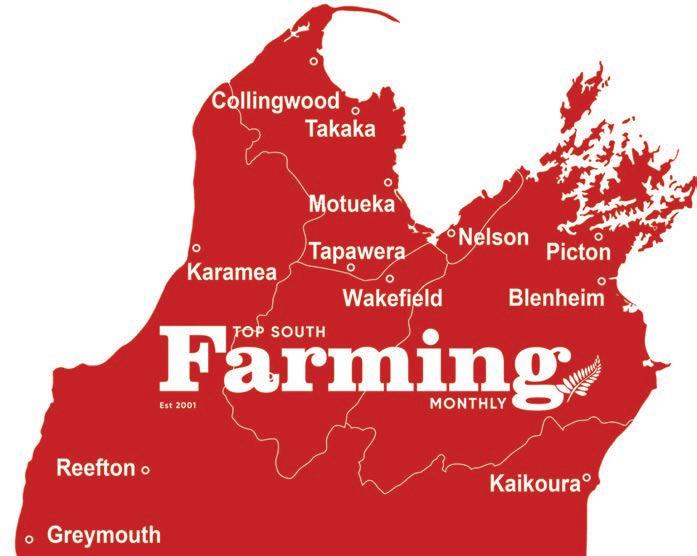

Atawhai 4 Square
Bayleys Richmond
Brightwater NPD
BMTT
Caltex Wakefield
Connings
Ewings Poultry
Farmlands Richmond
Farmlands Motueka
Filco Farm & Sport
Fresh Choice Takaka
Hira General Store
Hodgson Store
Murchison
Farmlands Hokitika
Farmlands Greymouth
Tasman AG Ikamatua
Farmlands Westport
Farmlands Blenheim
Seddon Supermarket
Renwick FreshChoice
Tractor Repairs & Spares
Renwick
Farmlands Kaikoura
Mariners Mall Picton
Harcourts Richmond
PGG Wrightson
Murchison
MS Ford
Murchison Vet Clinic
R & J Batteries
St Arnaud Store
Stihl Shop Richmond
TSM, 563 Main Rd Stoke
Tractor Repairs & Spares
Richmond
Town & Country Vets
Tasman Honda
Karamea Visitor’s Centre
PGG Greymouth
Buller Vets
PGG Kaikoura
Rai Valley Brick Oven
4 Square Havelock
TSM Marlborough, 52 Scott St, Blenheim Vet Marlborough

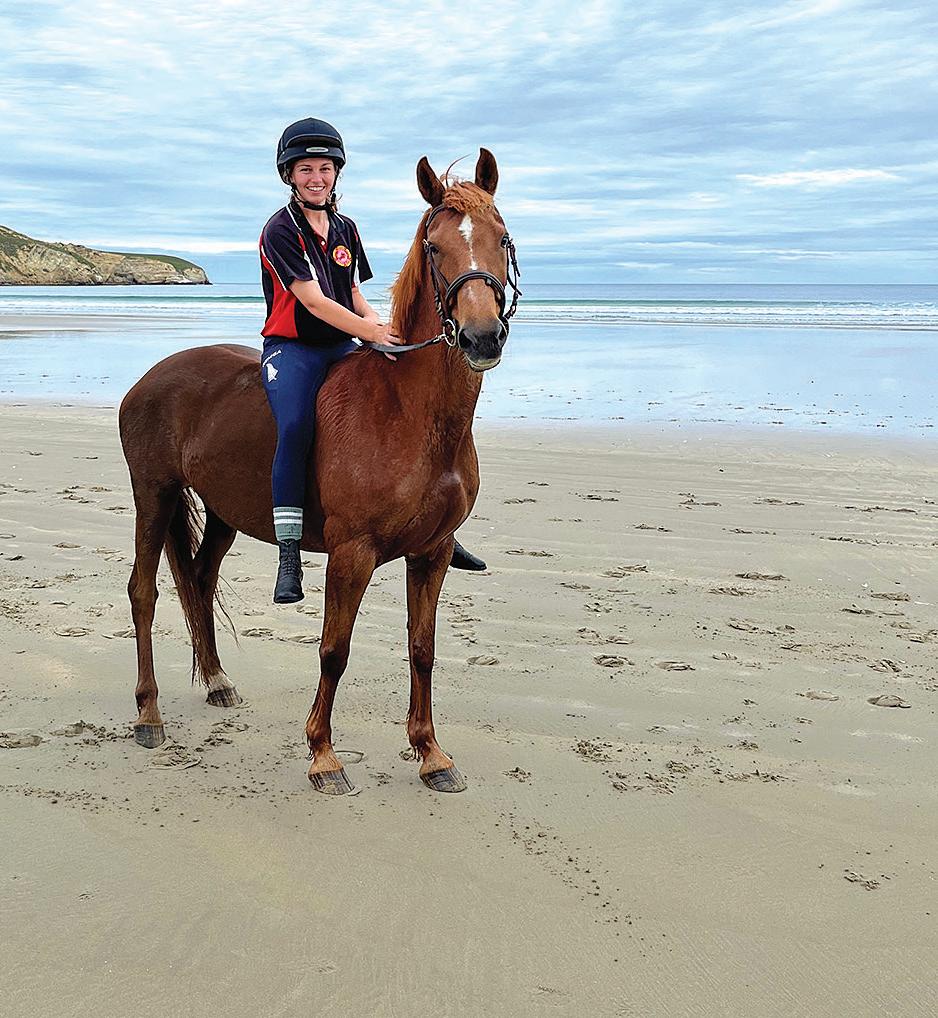
From the bustling streets of London to the Kiwiana outback of Otorohanga, in the King Country, at the age of eight Daisy Morgan fell in love with horses, rural living, and rural people which has shaped how she lives today.
“My dad was one of the cops that got recruited to NZ from the UK and when we arrived in Otorohanga we were proper city people,” Daisy explains.
“It was here that I got a real taste of rural living and rural people which I just loved. I also found a passion for horses which I always had, but we now had lots of friends with farms and horses and neighbours with horses so I got more involved in them.”
Two years on, the family brought a lifestyle block in Taupō which allowed Daisy to have horses, alongside calf rearing.
“This was a great 10 years,” Daisy says reflectively, “I loved being involved in the rural lifestyle and I had my horses.”
At 18, her love for the rural lifestyle, and its people, encouraged her to undertake an Agri Science degree.
“I had friends that were going Massey uni, and some were doing the Agri Science degree so that was good. I also knew that in the agri sector there are big opportunities and ever-changing challenges within the sector, so I was keen to get involved,” Daisy explains. After completing the three-year degree,


a job popped up for Pāmu Farms on the West Coast as a business analyst which fitted with her studies and passion, so she applied.
“When I came down to the South Island for a job interview it was the first time I had ever been to the island,” Daisy says.
“It was just so beautiful and different to the places that you see up north. I was very lucky and got the job I applied for.”
Based outside of Lake Brunner, Daisy says that she loves the area and has enjoyed visiting all the places new to her. “The scenery is unbelievable, “ she adds.
“Everyone told me about the rain when I was moving down, so I brought a particularly good raincoat and oddly we have had two years of drought, “Daisy says.
Her role for Pāmu involves supporting 16 farms, a mix of dairy and dry stock, with operations and compliance.
“I love the role, it has huge variety, and I am always keen to get involved with changes in the sector, the people I work with are good and passionate about what they do,” Daisy says.
“Farming isn’t easy, and with increased challenges and regulations over the past few years farmers are having to think a lot about compliance and sustainability,” she explains.
“Agriculture is so important and should have more support. I am really happy to be able to be part of it and to also be able to enjoy living a rural lifestyle.”









Now in its nineteenth year, this programme helps grow New Zealand’s future viticultural leaders. Previous contestants, many now senior leaders in the wine industry, still appreciate how Young Viticulturist of the Year gave them support and a steppingstone to help advance their career. The NZ Young Viticulturist programme helps under-thirtyyear-olds upskill, stretch themselves and network as well as giving them an opportunity to share their ideas about the future. The competitions are tough, and the contestants are tested on all aspects of viticulture and vineyard management. They are also fun and bring a great sense of achievement. The regional competitions will take place throughout June and July with the national final taking place at Escarpment in Wairarapa on 28 August. The 2024 winner will be announced at the Altogether Unique Wine Industry Celebration in Wellington on 29 August.
Marlborough Young Viticulturist Comp 2024 –4th July 8.15am-4pm and Marlborough Young Viticulturist Education Sessions 2024 – 9th May 2024 4 pm-6 pm Marlborough – NZ Wine Centre, Blenheim. Full details are online www.nzwine.com.




HortNZ is calling for nominations for the 2024 Horticulture Industry Awards. One award will be presented for each of the following categories:
• Bledisloe Cup - awarded for an outstanding and meritorious contribution to the New Zealand horticulture industry.
• President’s Trophy - to celebrate and develop inspiring leadership within the horticulture industry.
• Industry Service Award - to recognise people with long and dedicated service in a supplier role (not a grower) that have worked beyond the call of duty for the betterment of the horticulture industry.
• Environmental Award - to recognise a person, or organisation, that has developed and implemented a sustainable environmental project, with identifiable benefits.
• HortNZ Life Member - to recognise growers with long and dedicated service as office holders of HortNZ and/or affiliated Product Group or affiliated Grower Association.
Any grower member of HortNZ, an affiliated Product Group or an affiliated Grower Association can make a nomination. This year nominations are being accepted online. If you have any questions or would like further information email admin@ hortnz.co.nz or phone HortNZ on 0508 467 869.
Nominations close Tuesday, 18 June 2024 at 5pm. Awards will be presented at the Horticulture Conference Gala Dinner on Thursday, 29 August 2024.



Farmlands Calf Rearing Road Show
WHERE: Reefton Workingmens Club 55 Bridge Street, Reefton
WHEN: Tuesday 9th July from 10am
Keen to take your calf rearing to the next level?
Join ‘The Calf Experts’ for an informative session on all thing’s calf – from colostrum, shed preparation to nutrition, animal health and everything in-between! Walk away ready to rear your best calves yet! Many attendees of previous sessions with ‘The Calf Experts’ have said it’s the best calf rearing seminar they have ever experienced, so don’t miss out!
Bring your whole calf rearing crew along or come on your own. It’s time to upskill yourself so you’re ready to tackle the season. Plus, just by attending, you’ll have the chance to win a Stallion Mini Mixter Tanker valued at $4,370*, along with spot prizes and more!
So, join us for the presentation, meet suppliers, and stay for lunch! There will be something for everyone, from newbies to more experienced calf rearers, with heaps of practical tips along the way.
Proudly partnered with FMG, Stallion and Milligans















